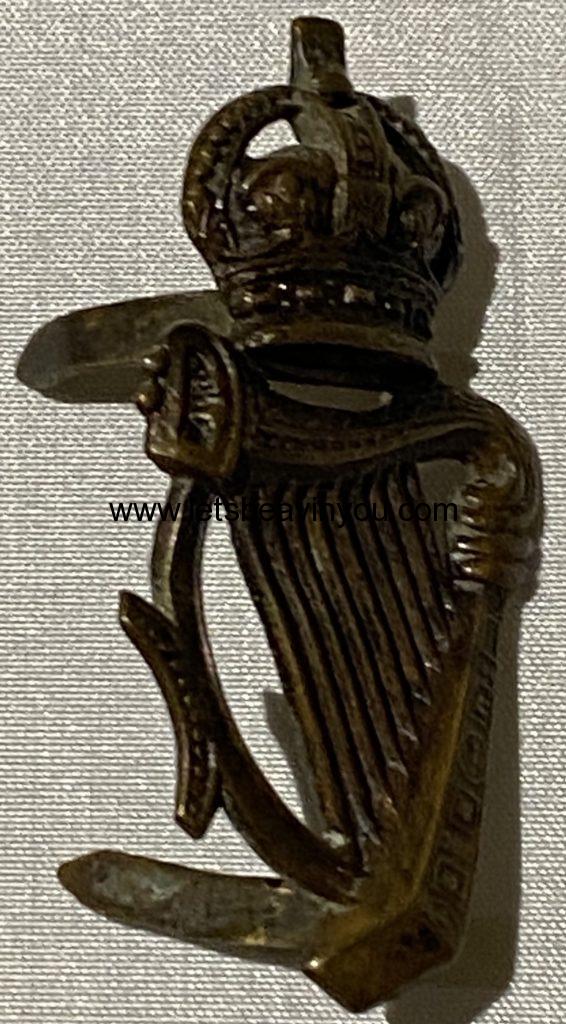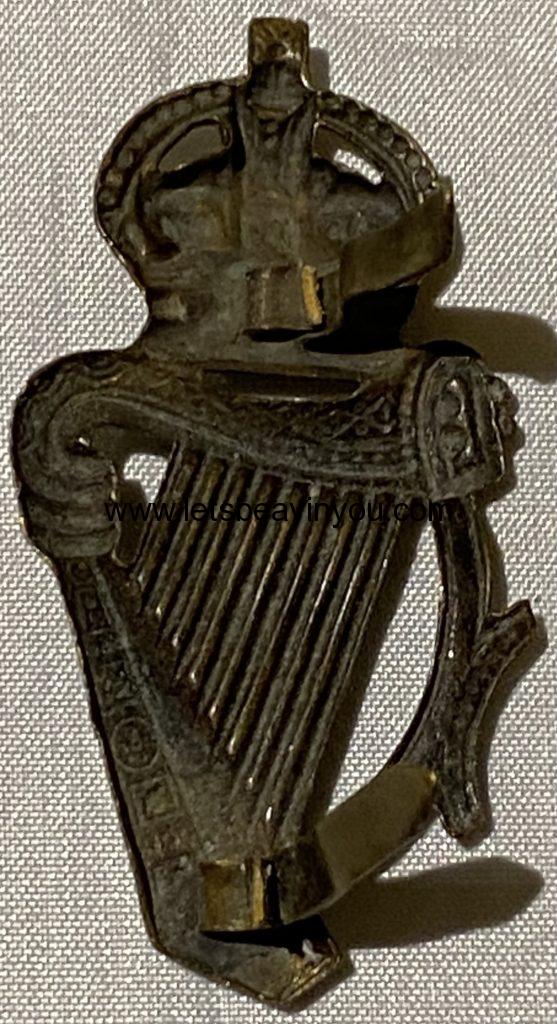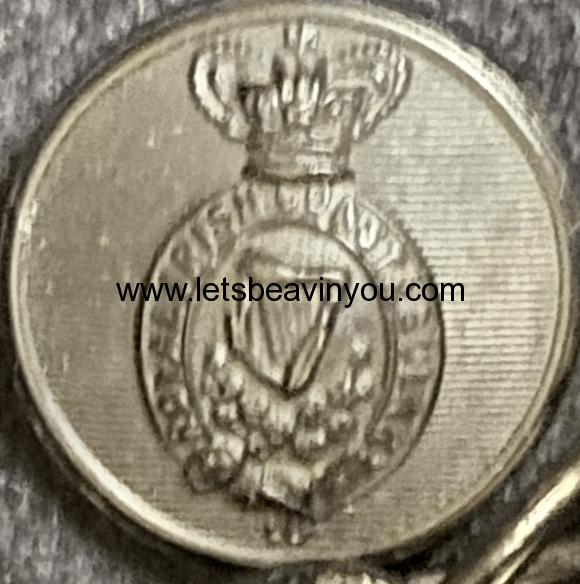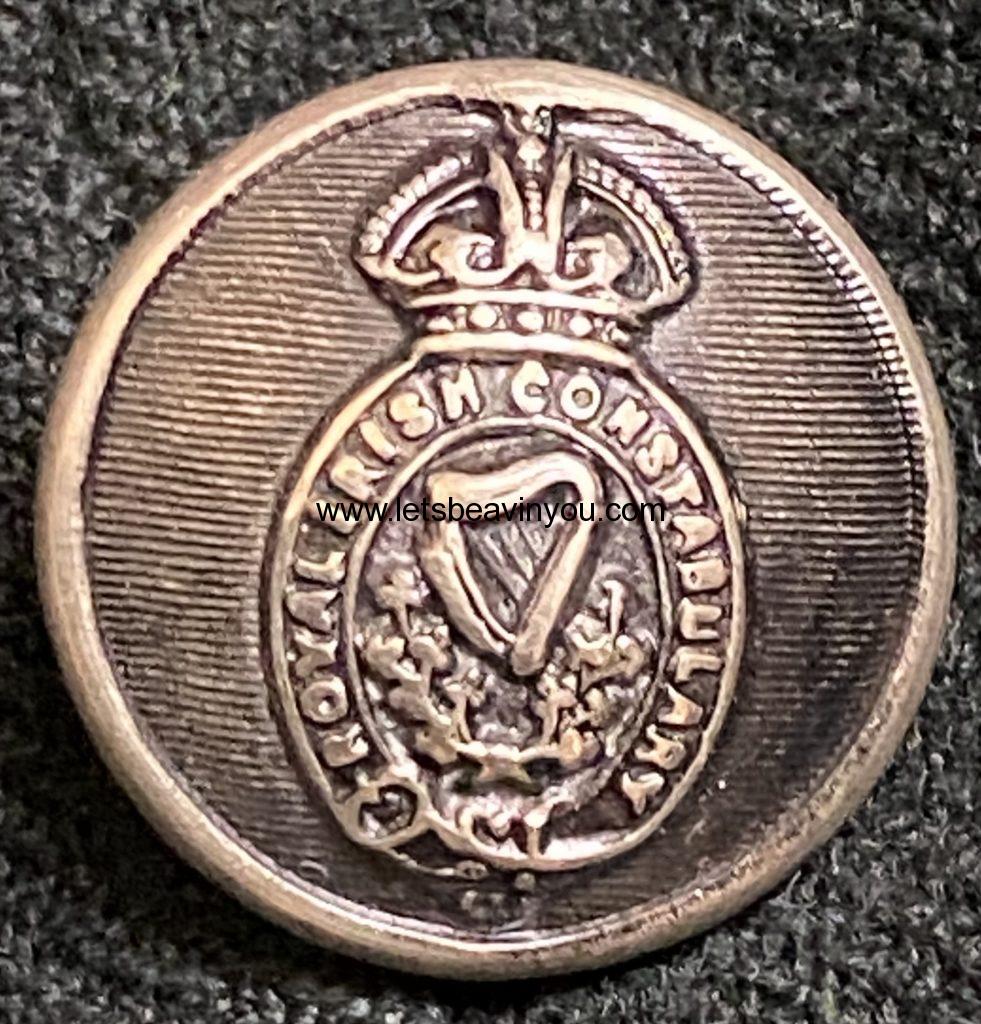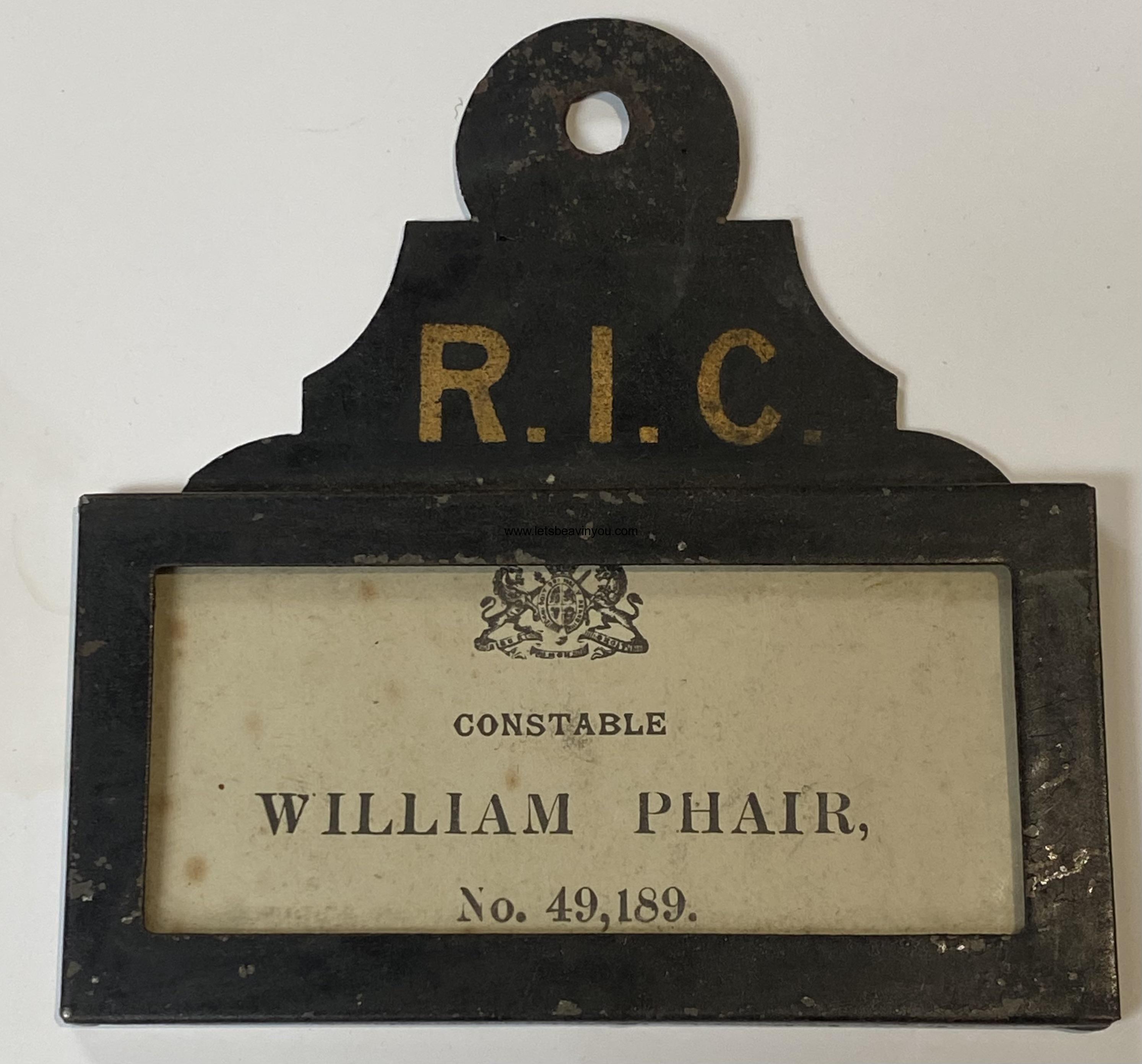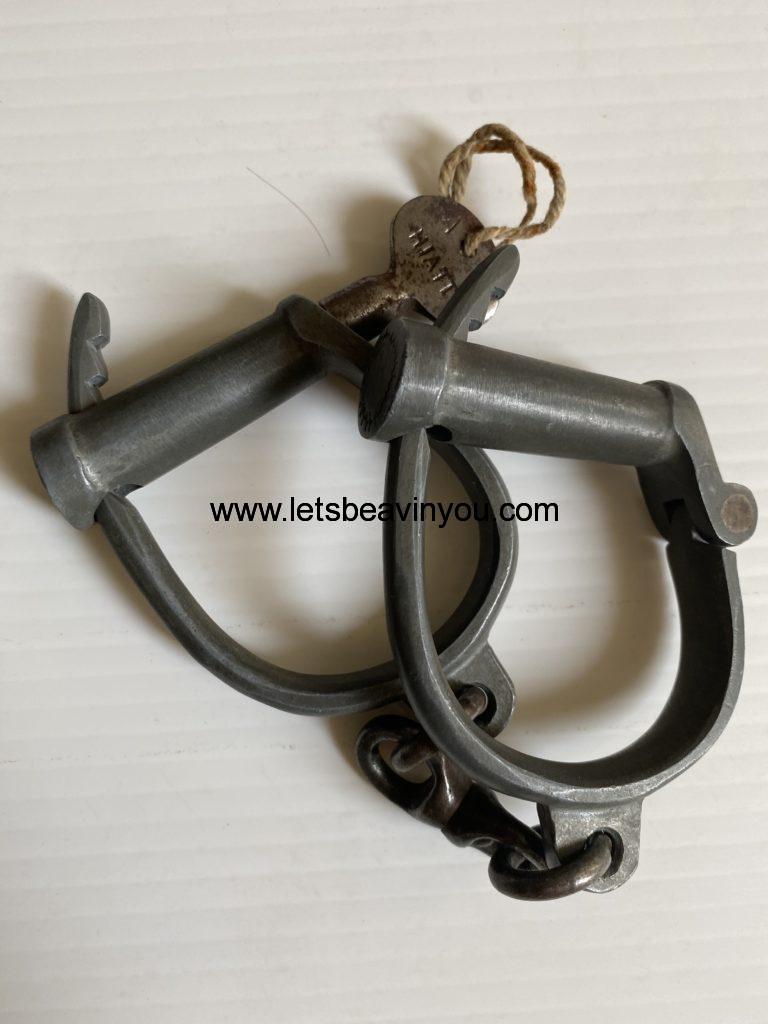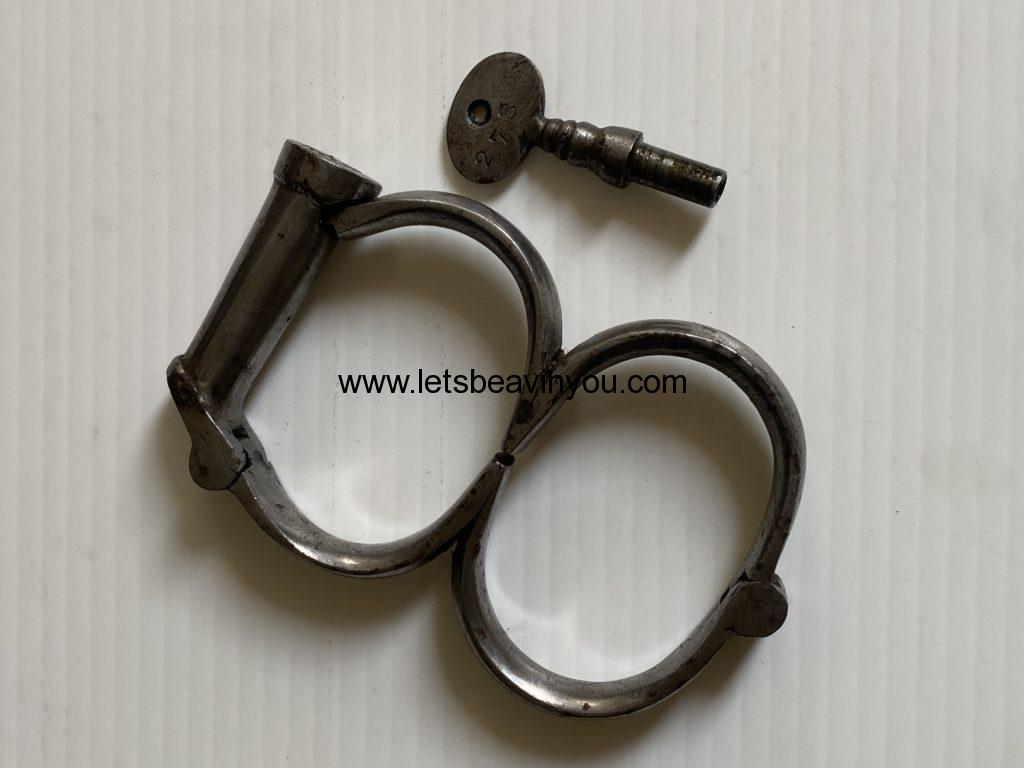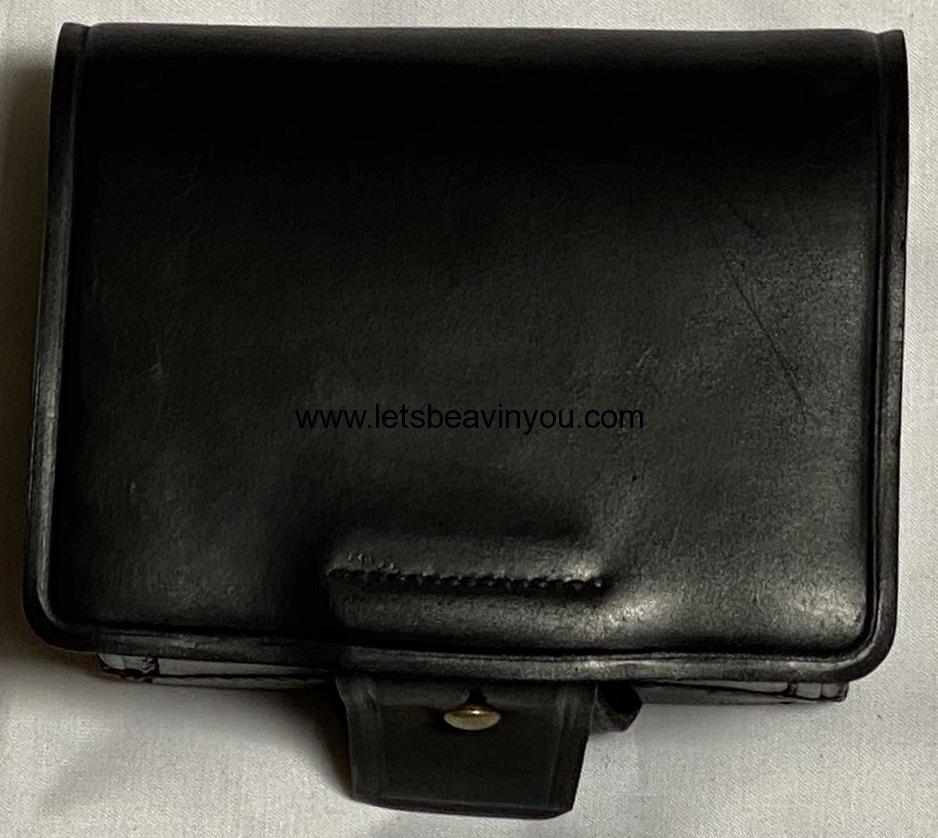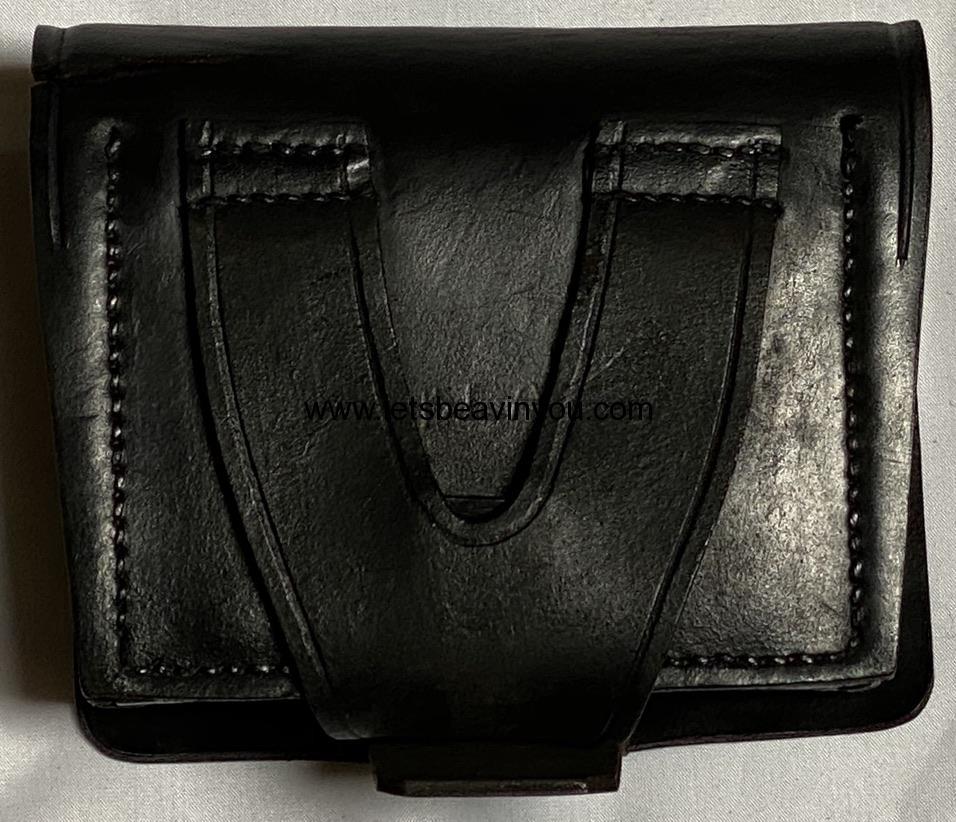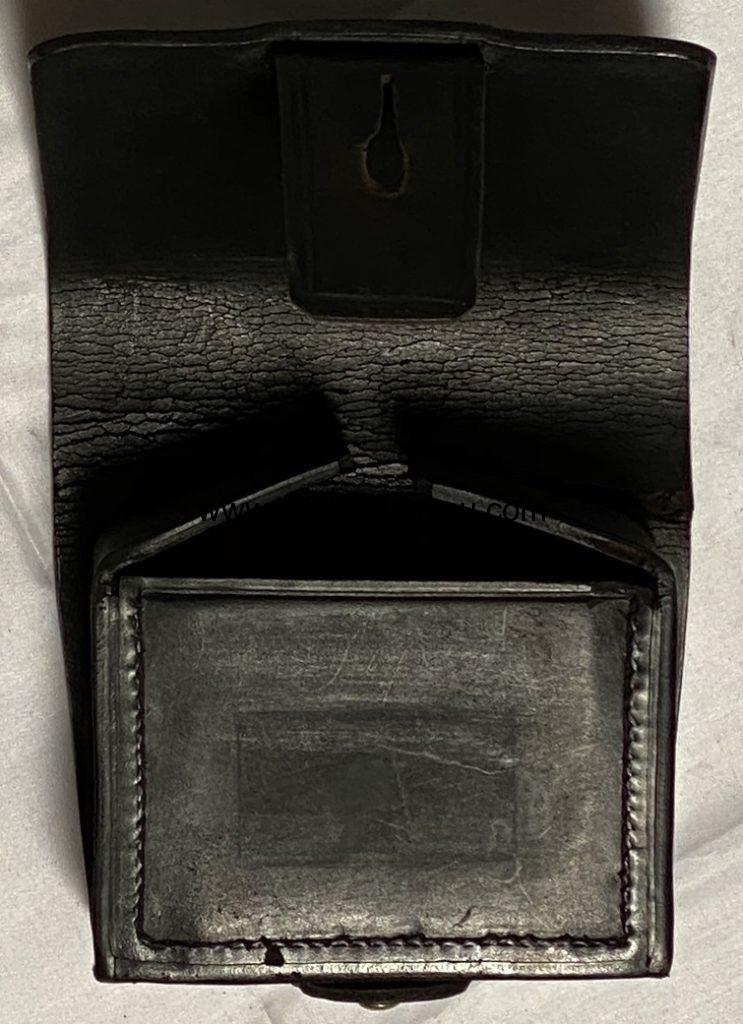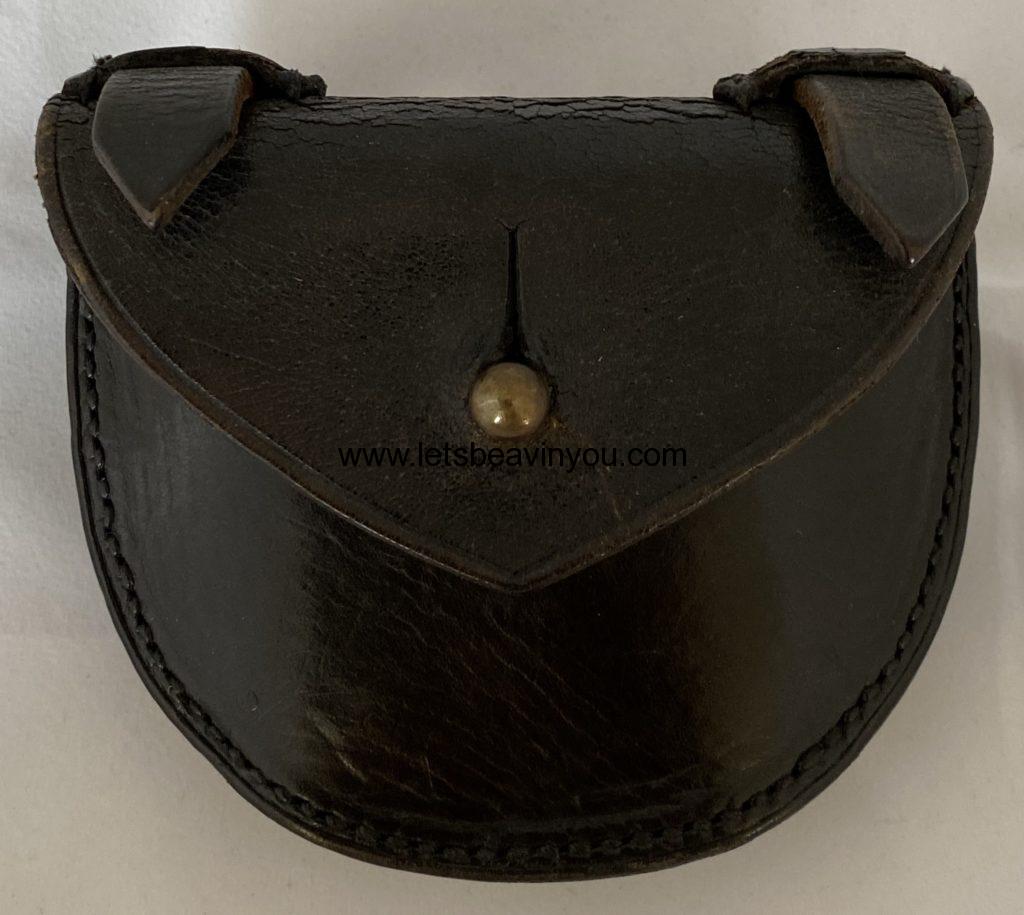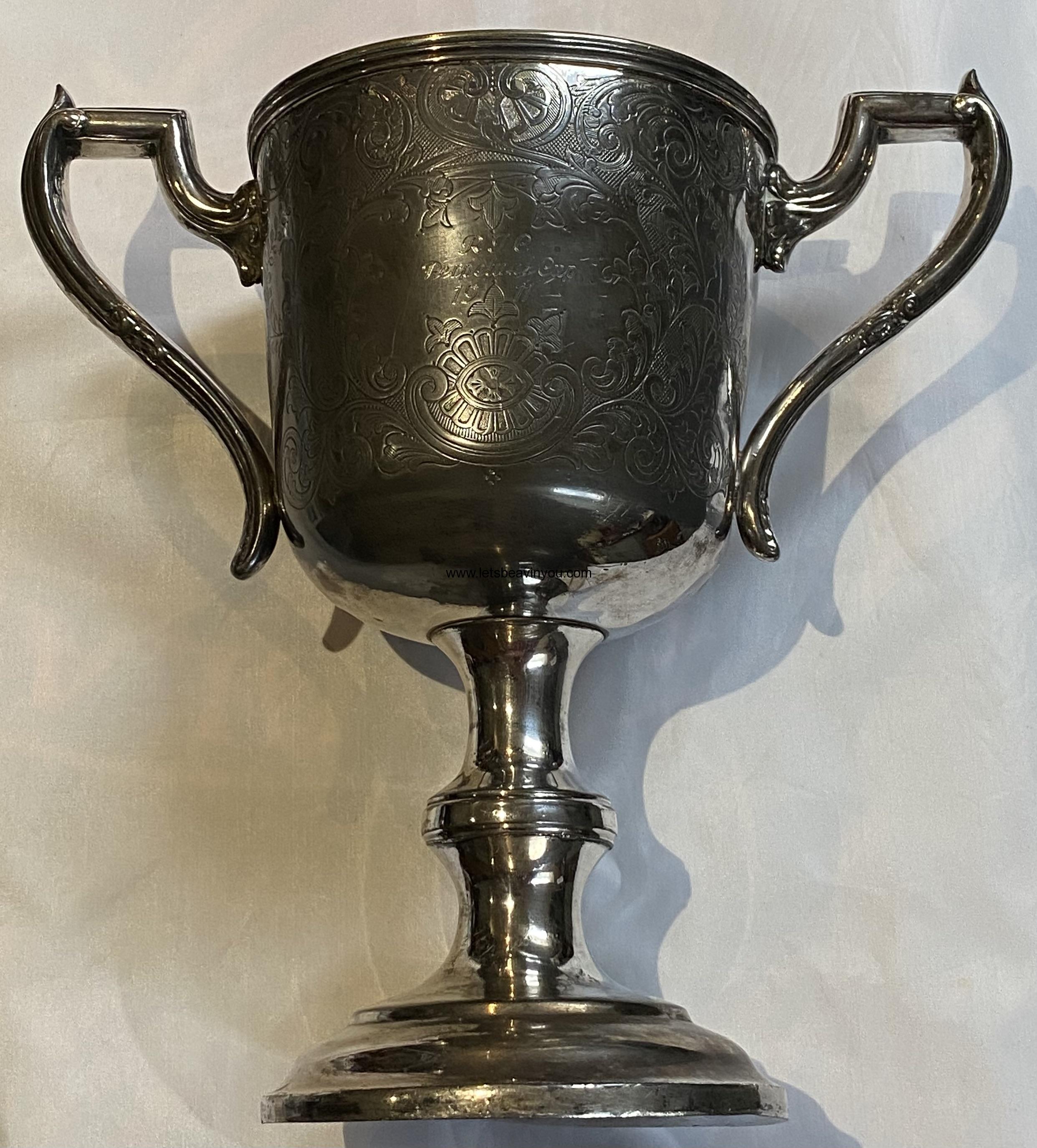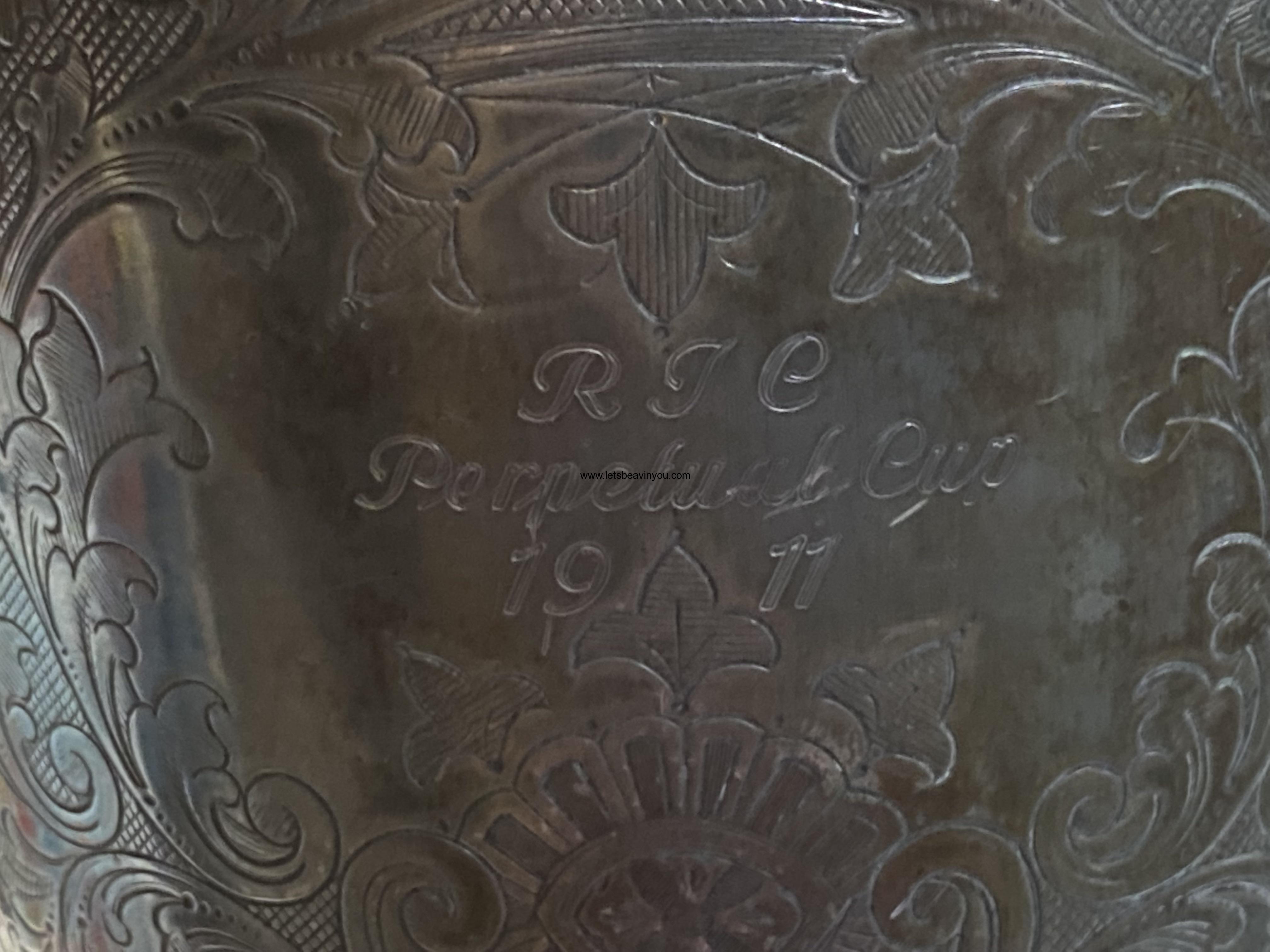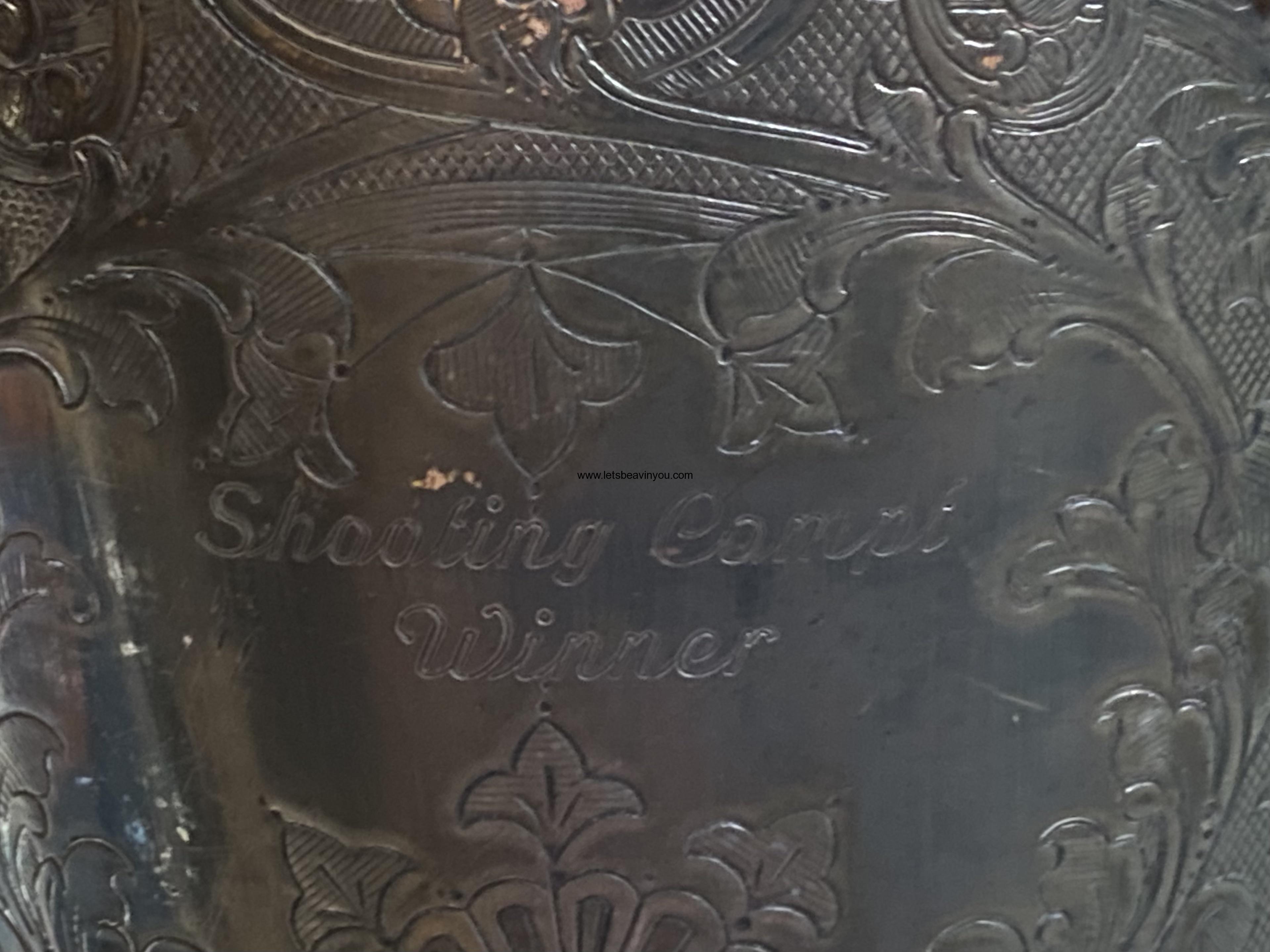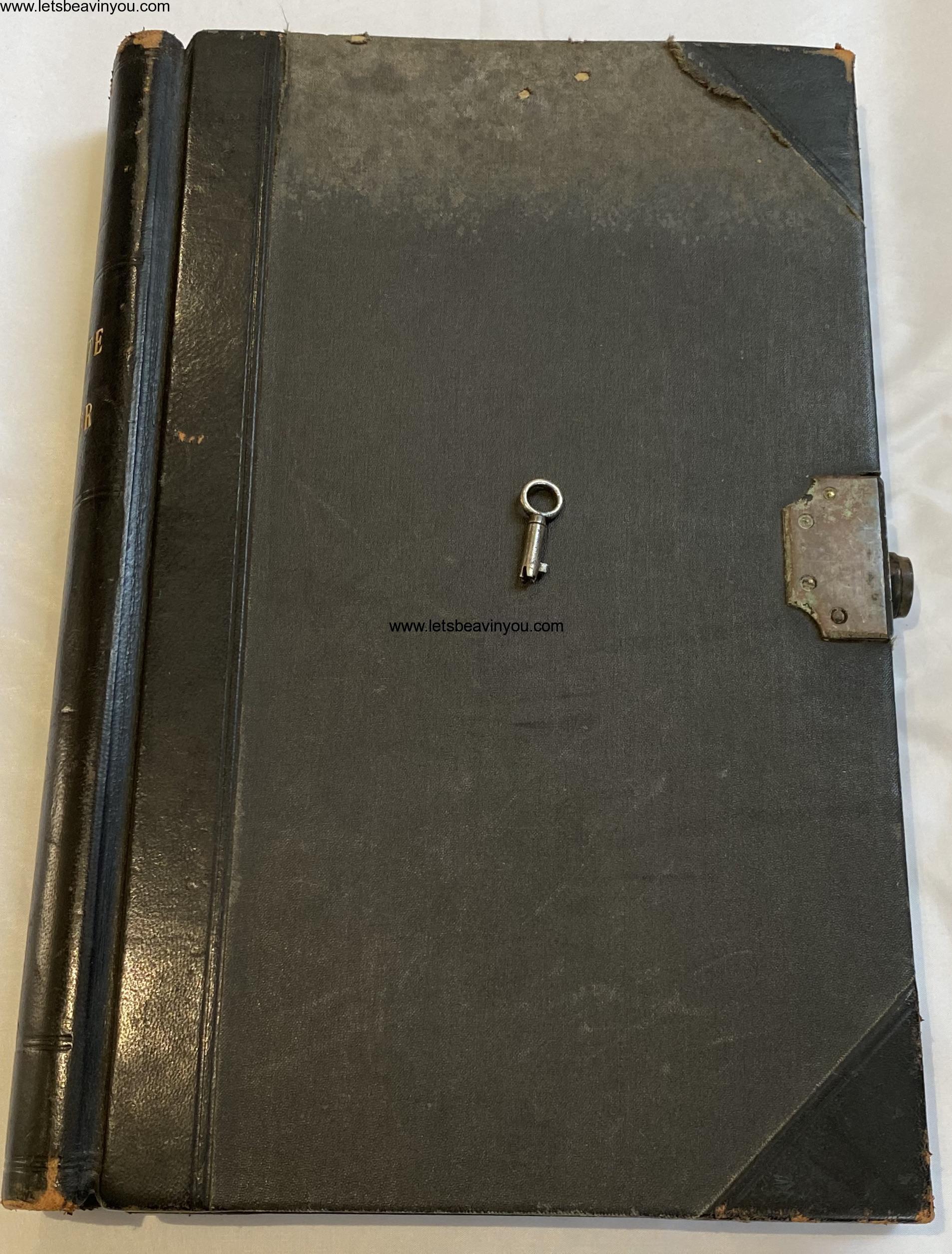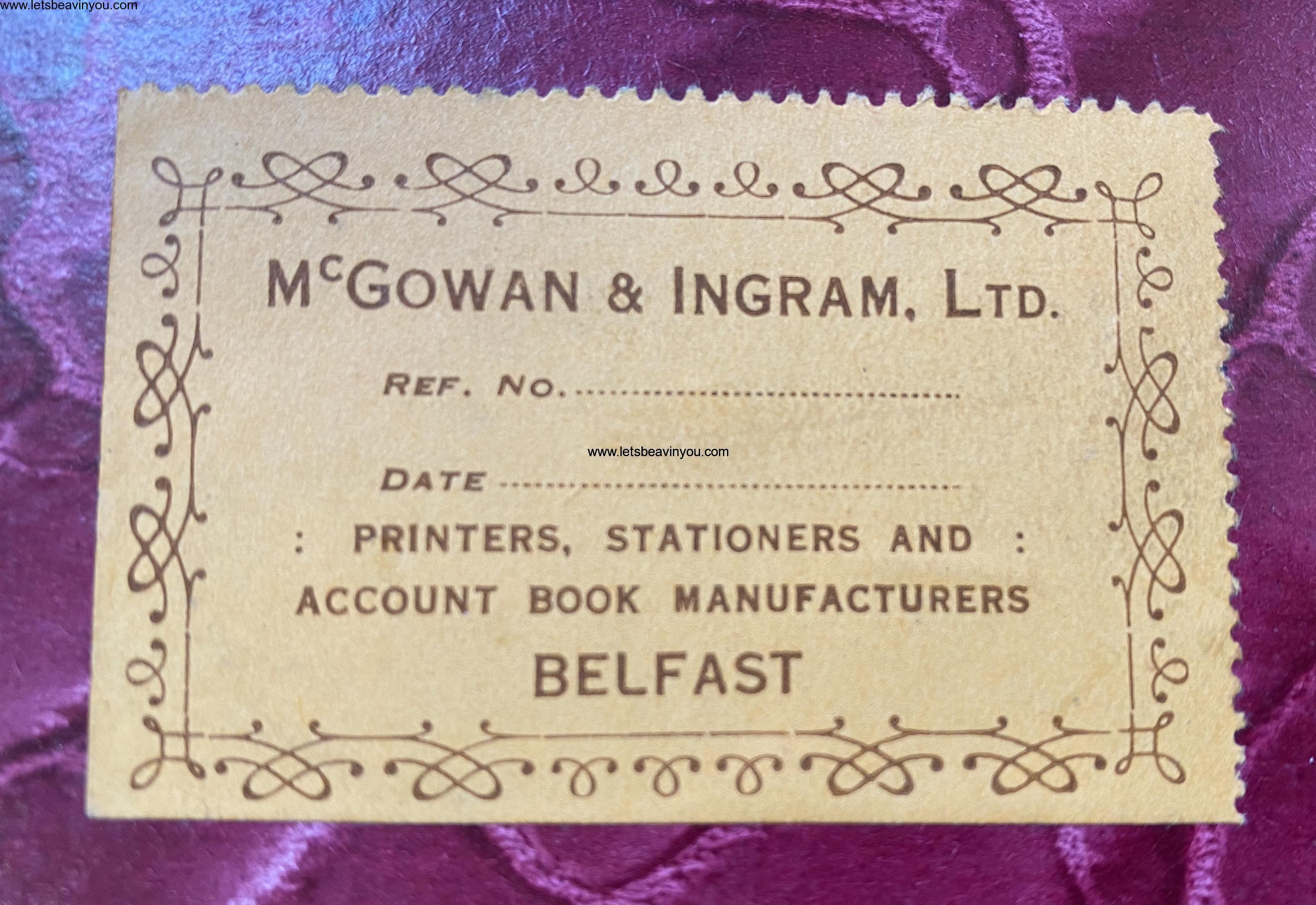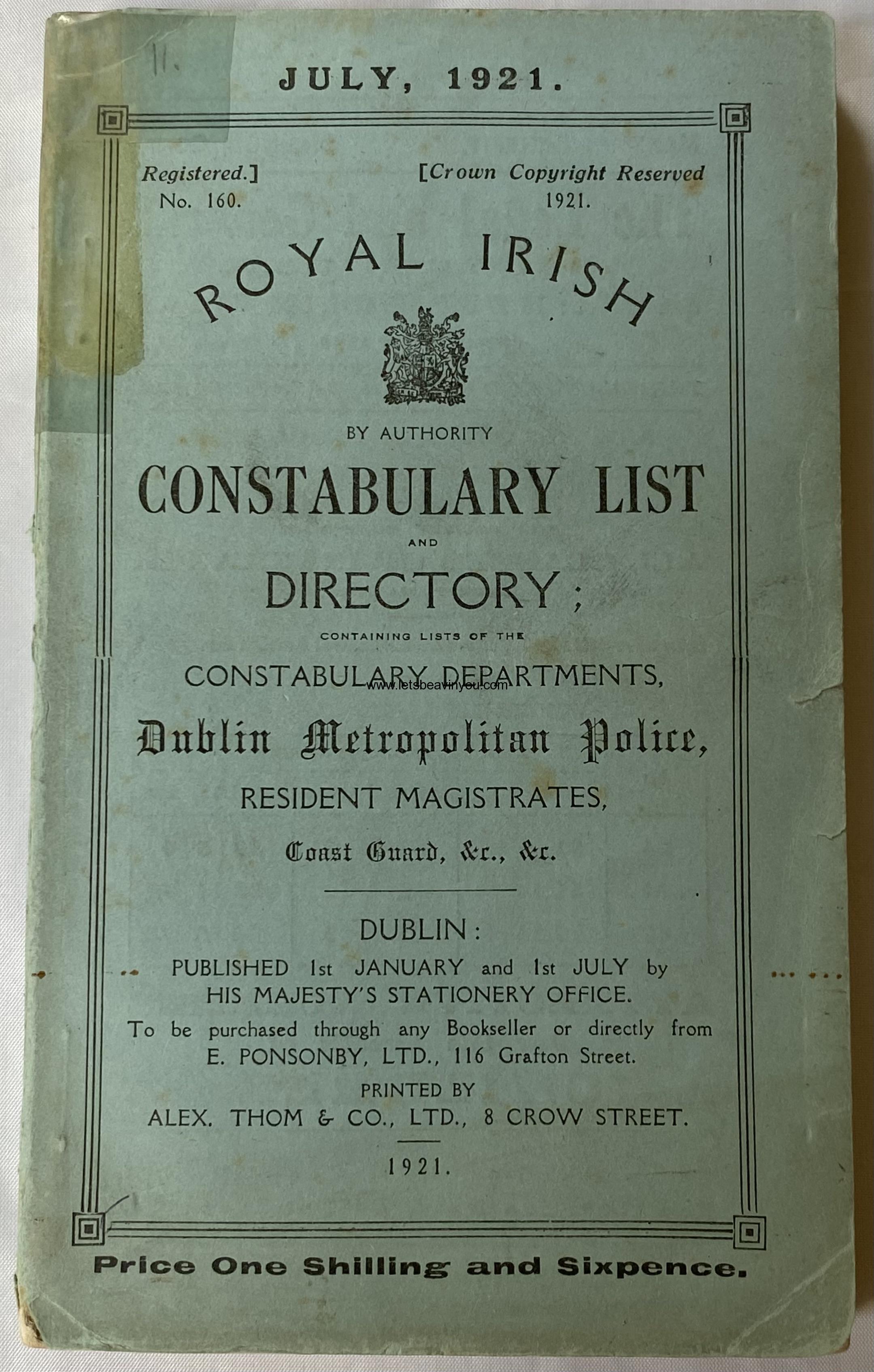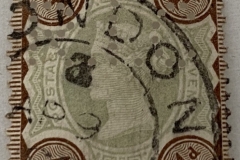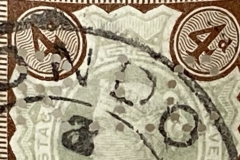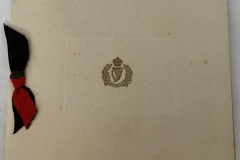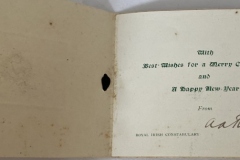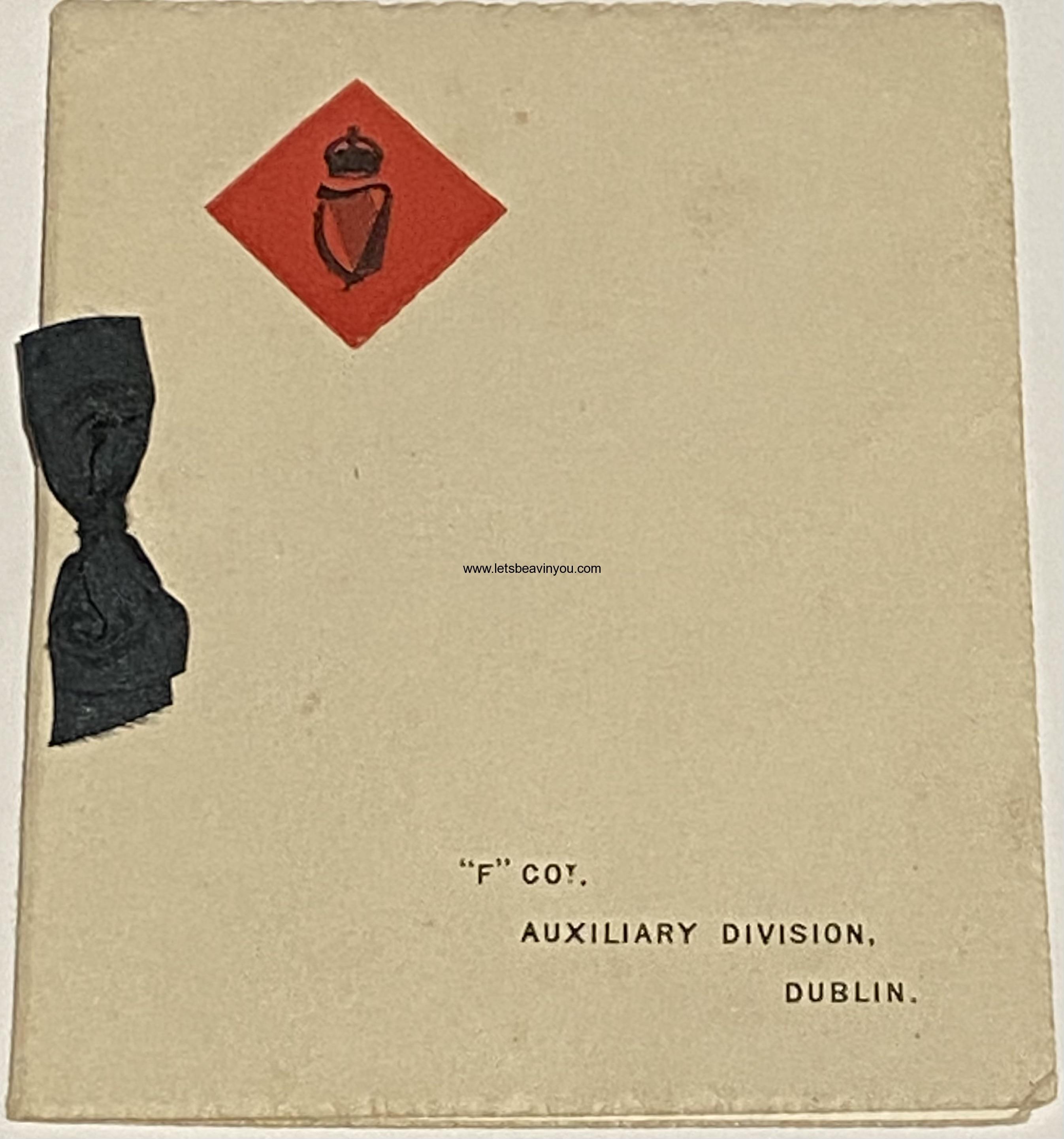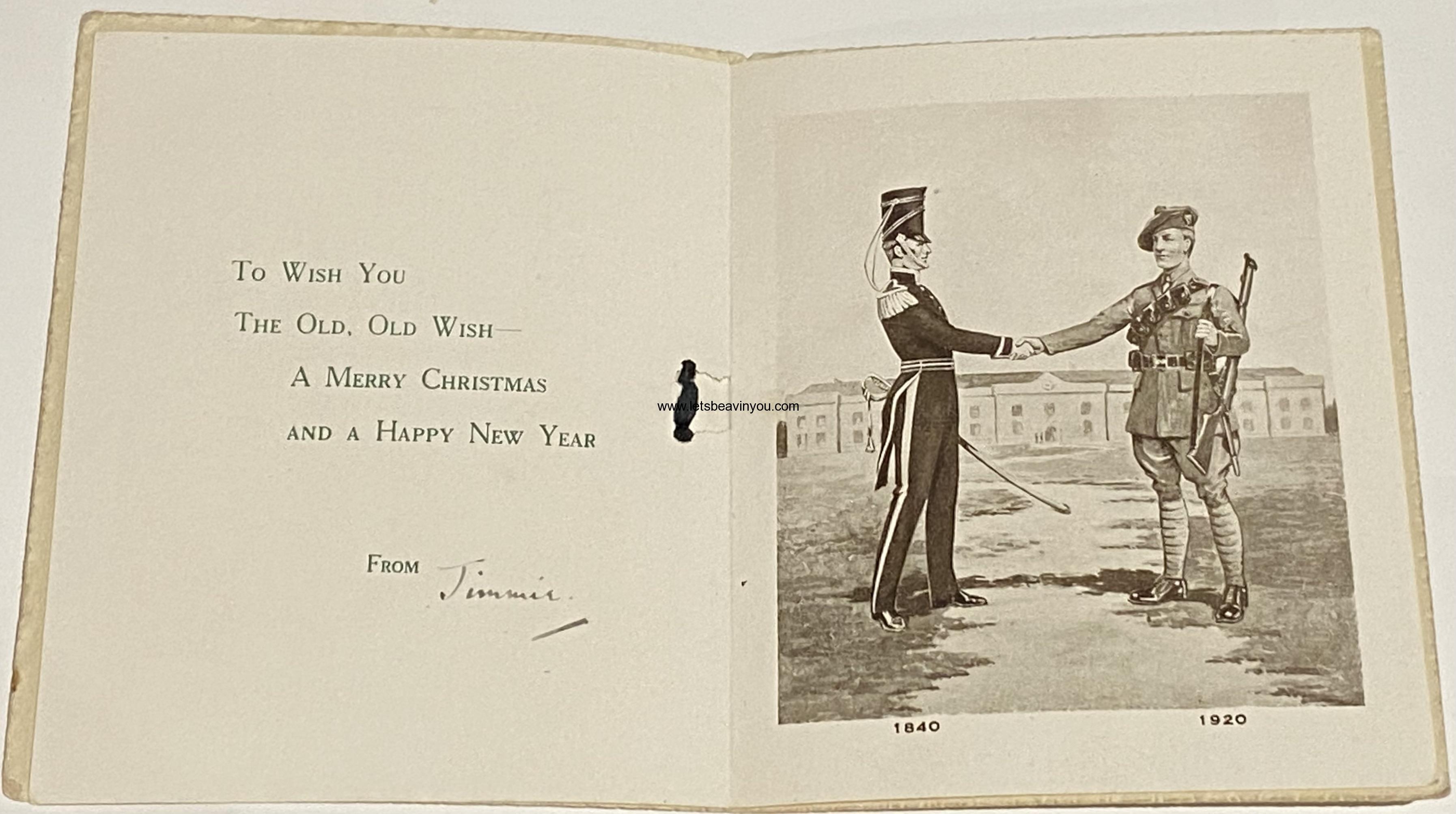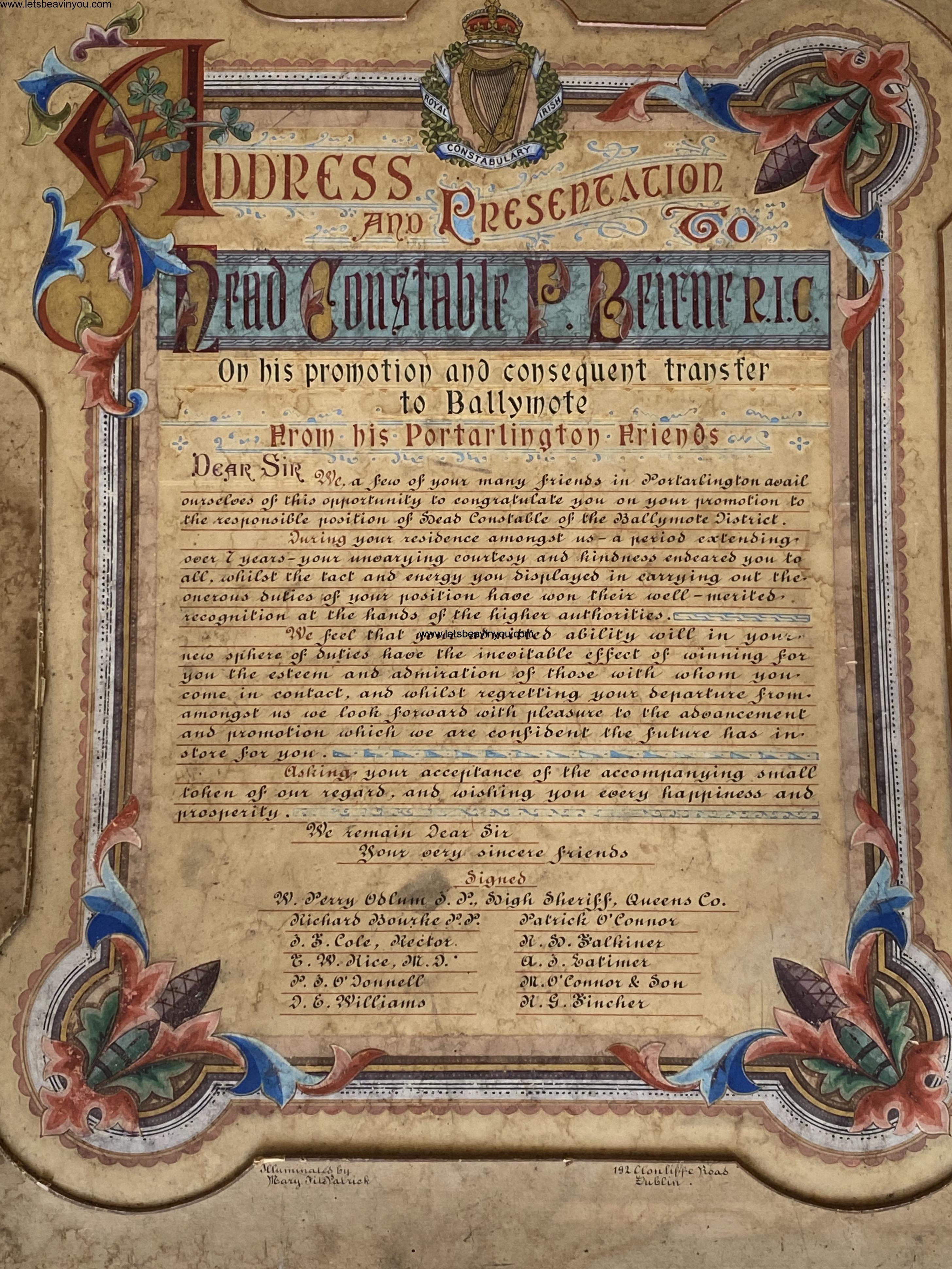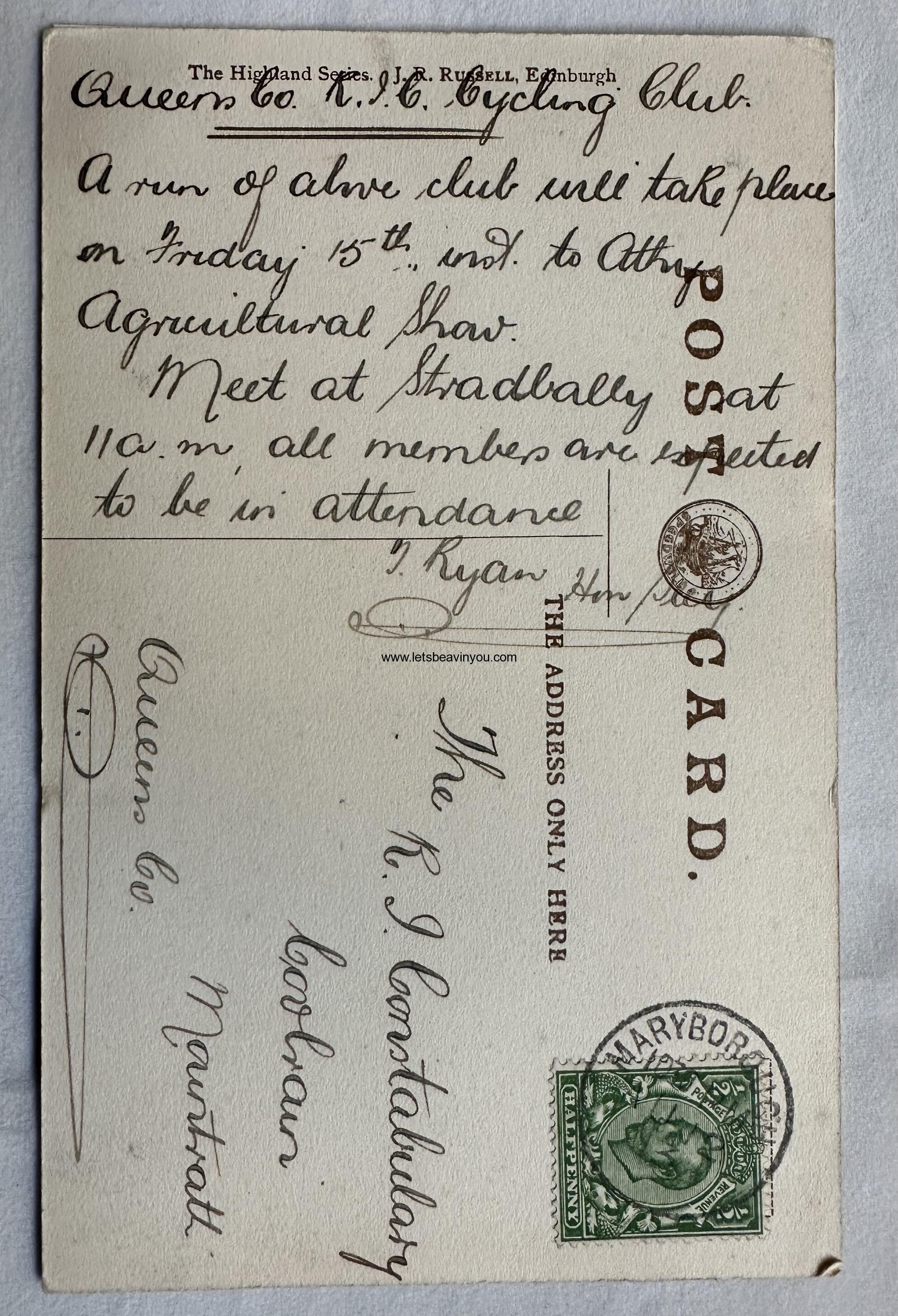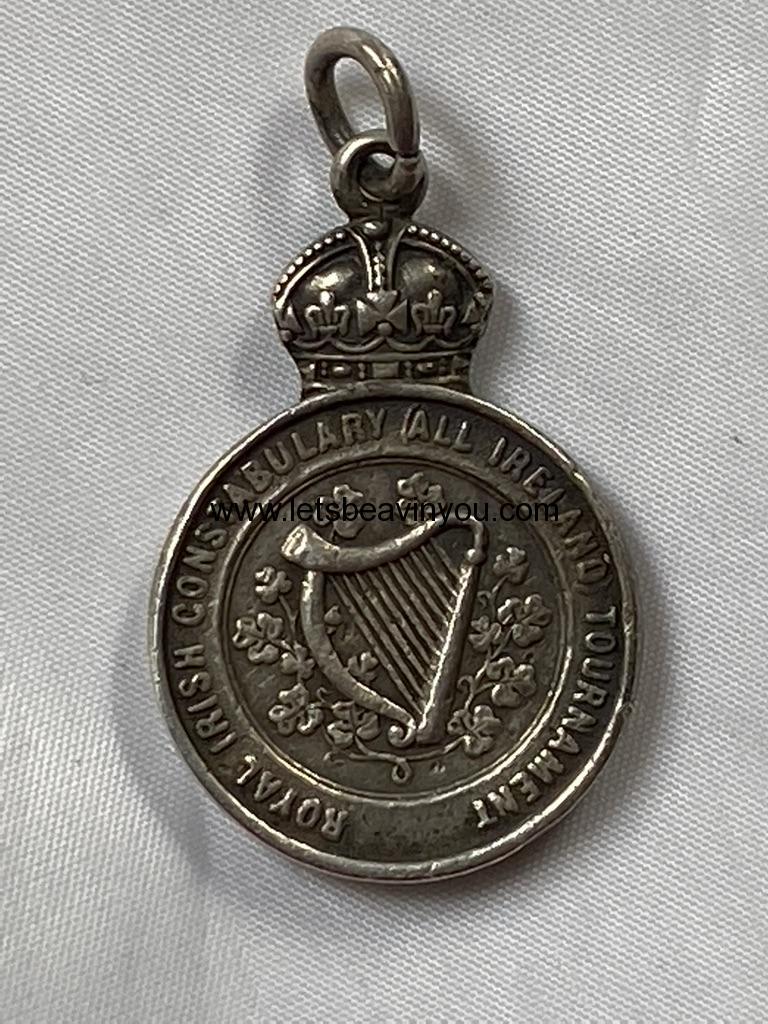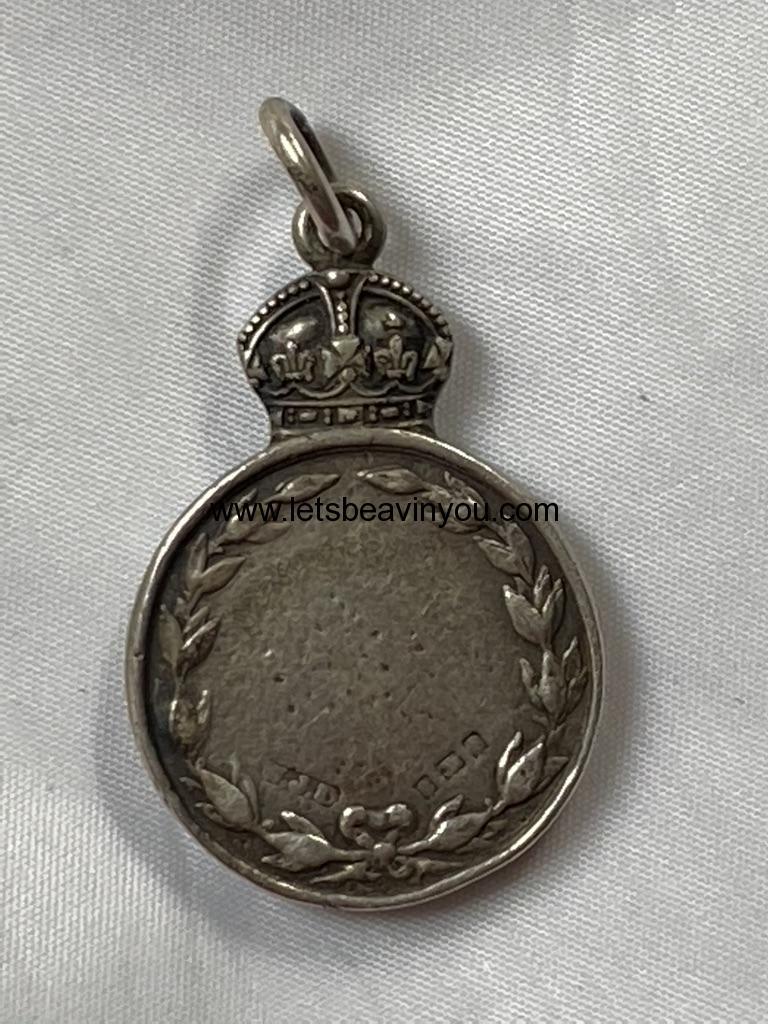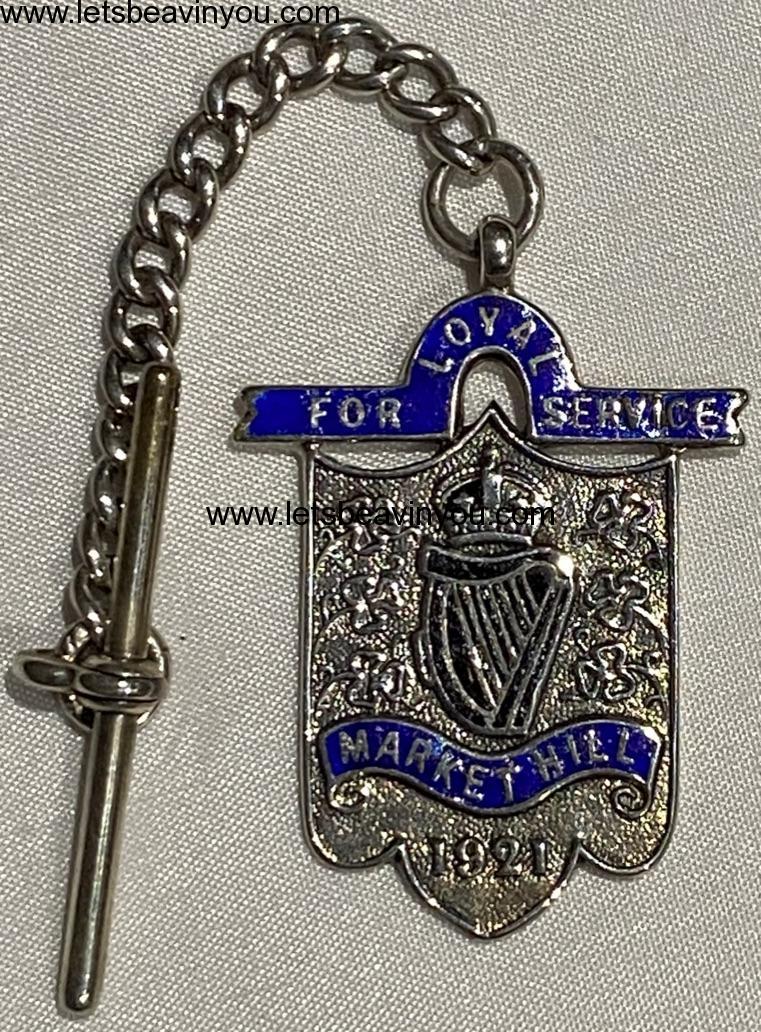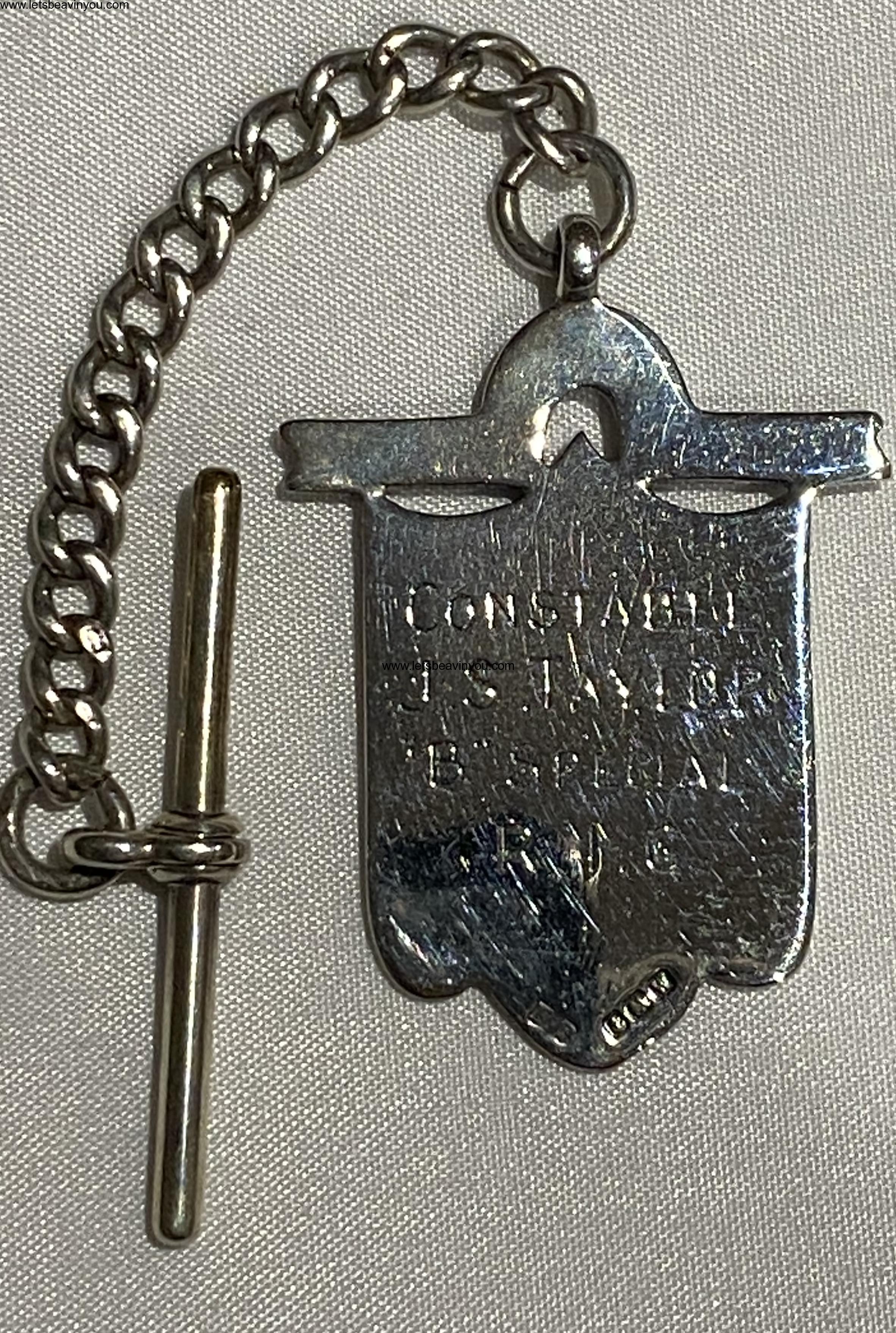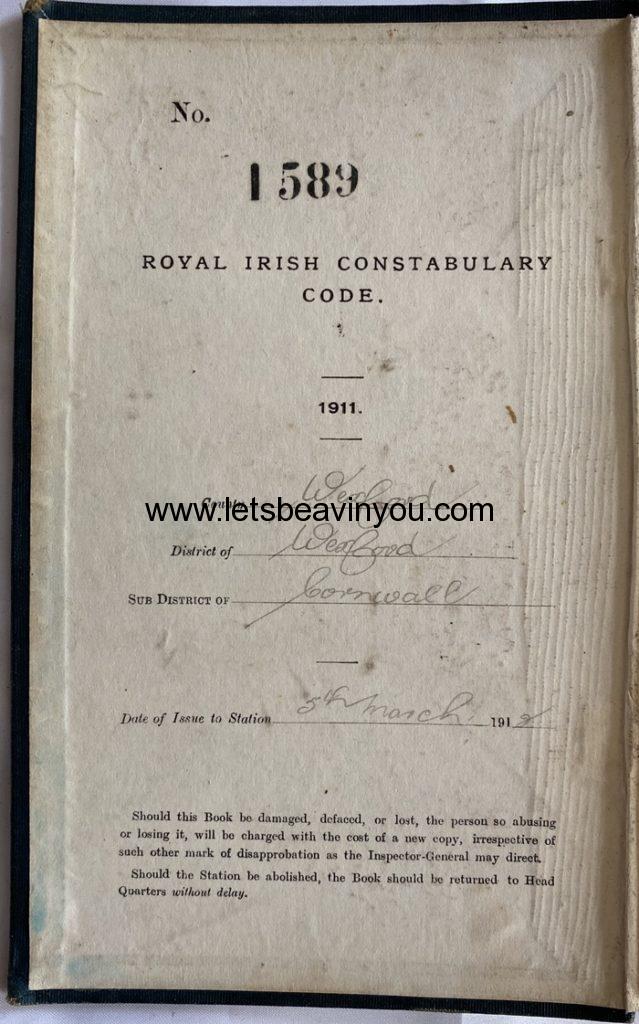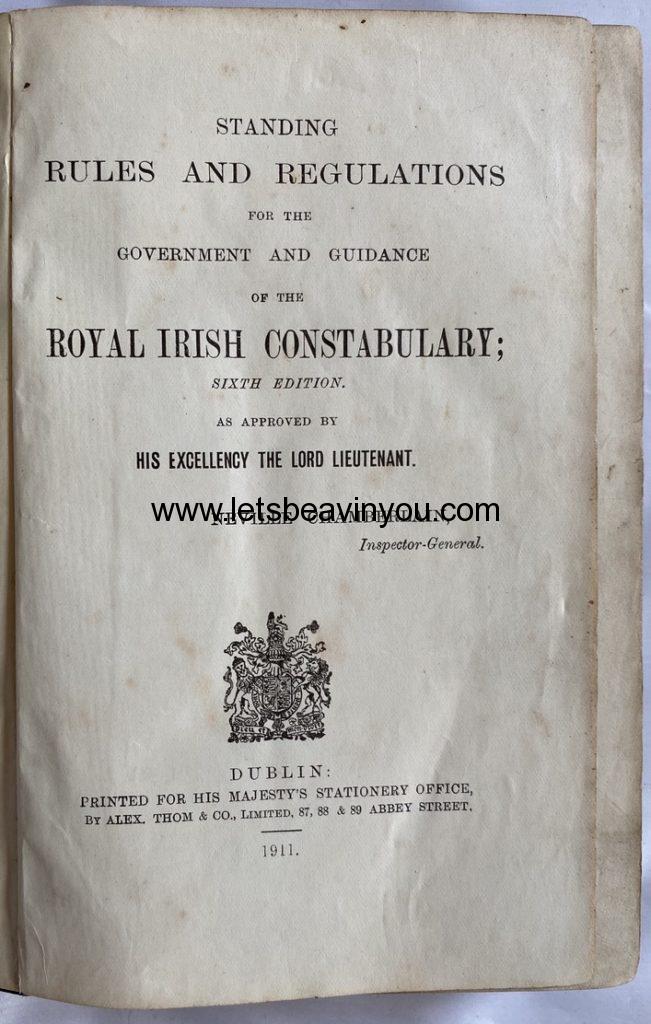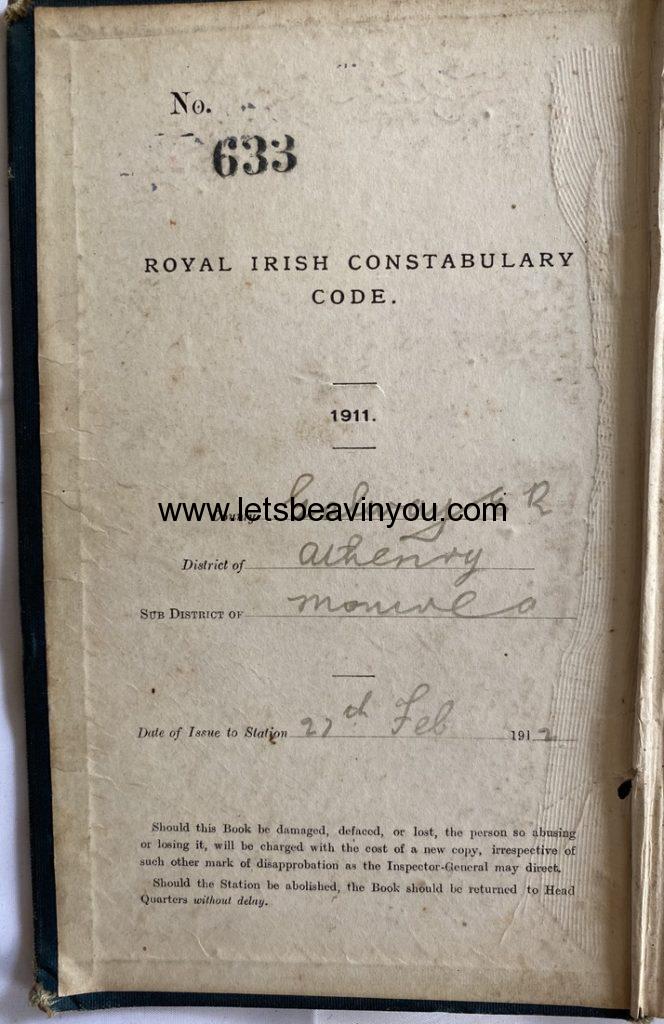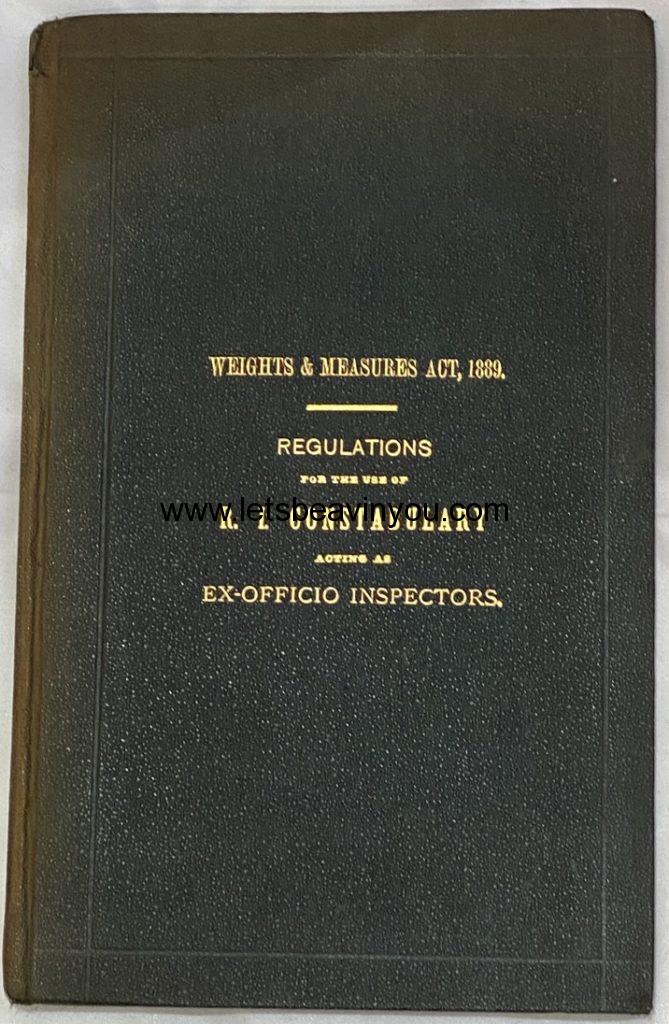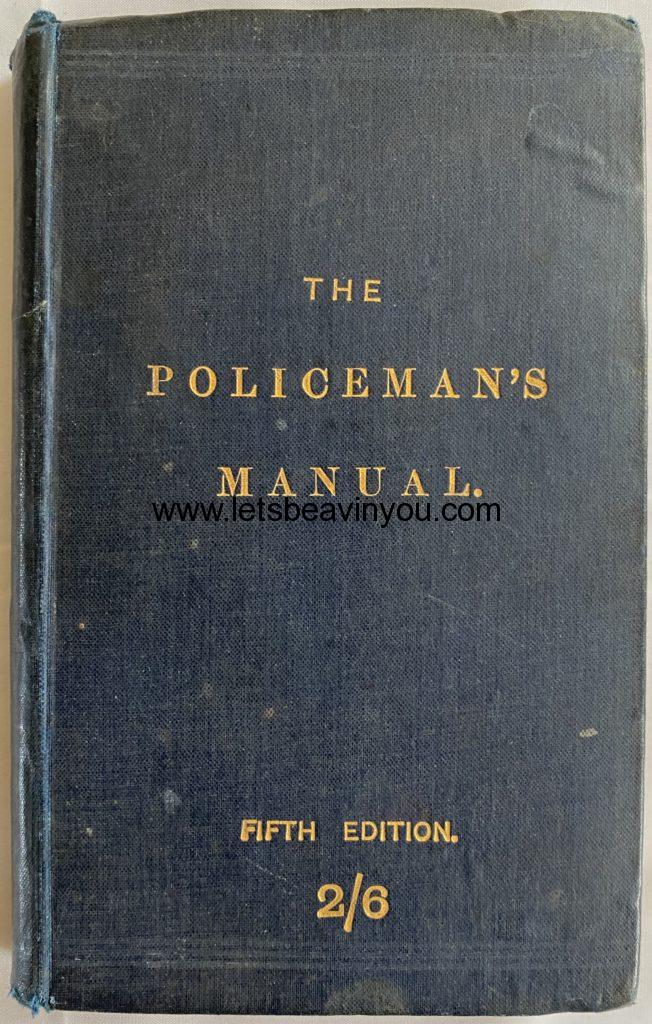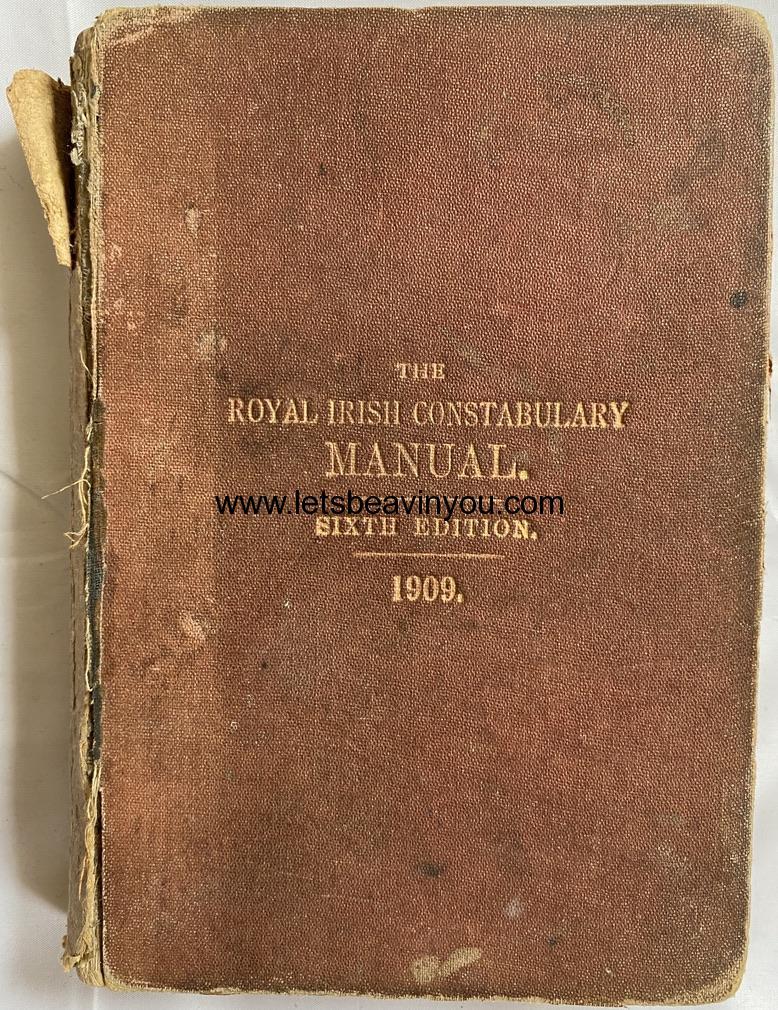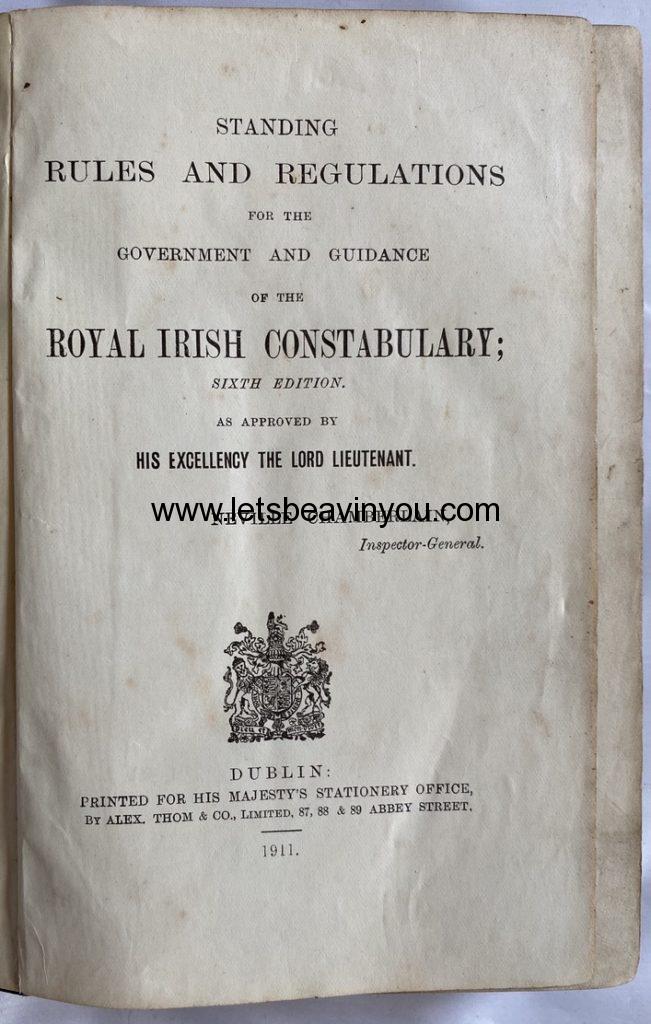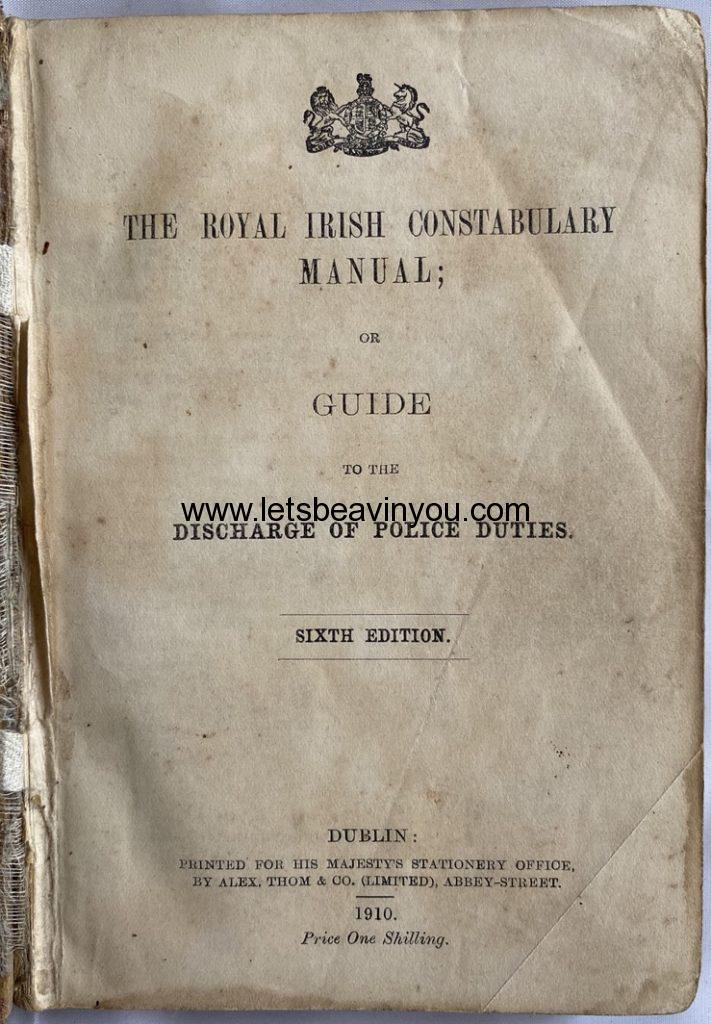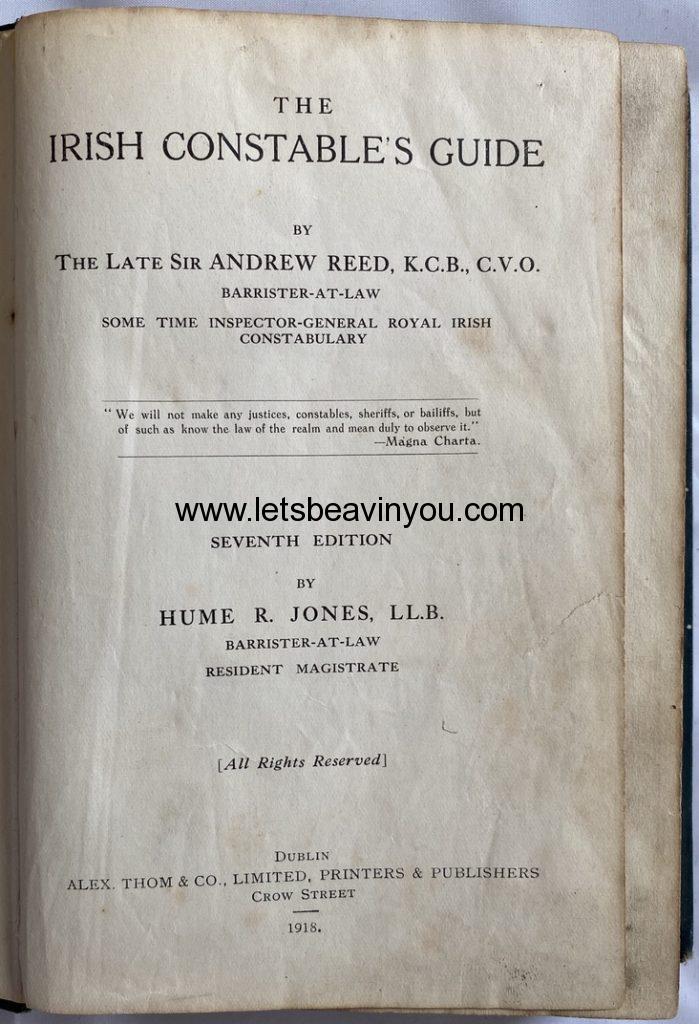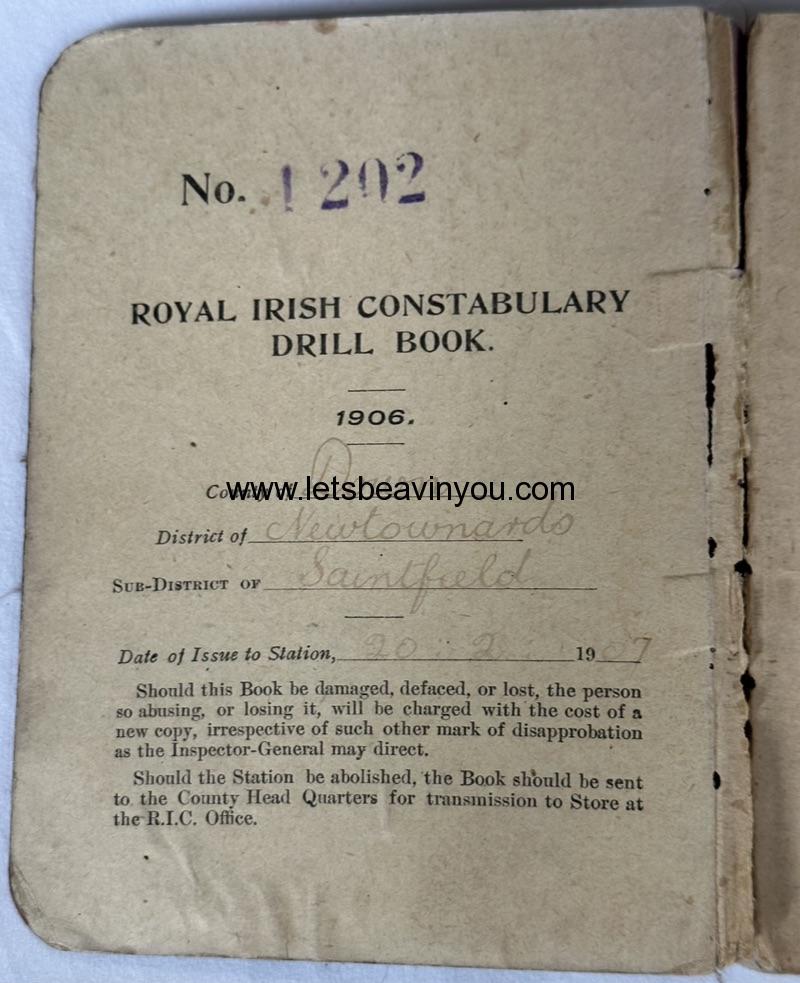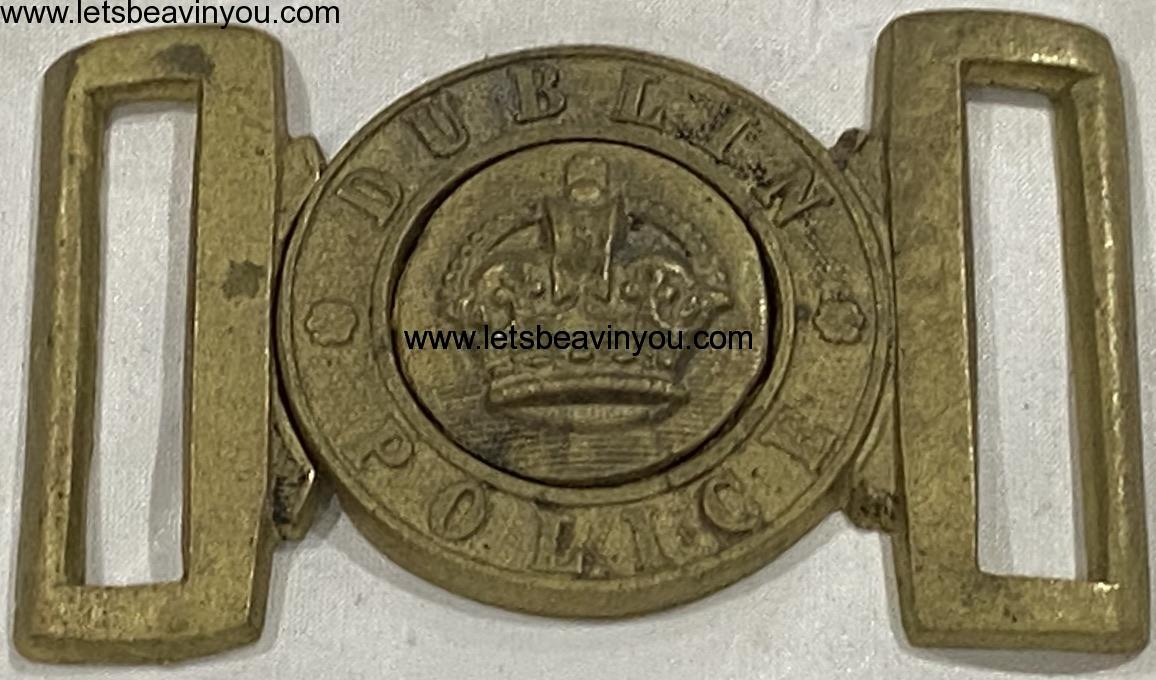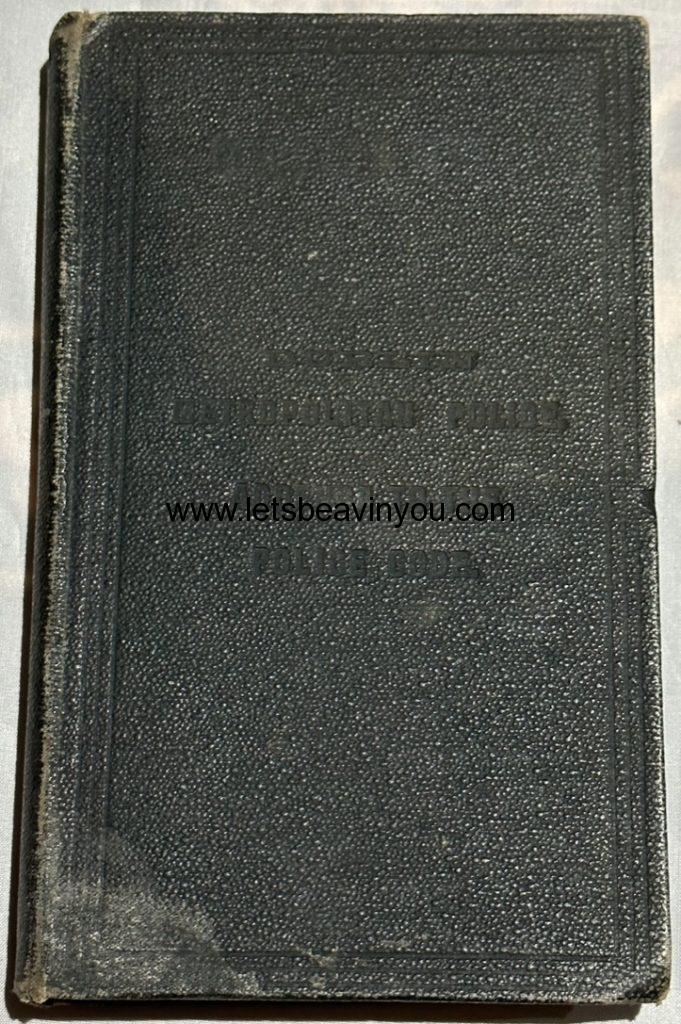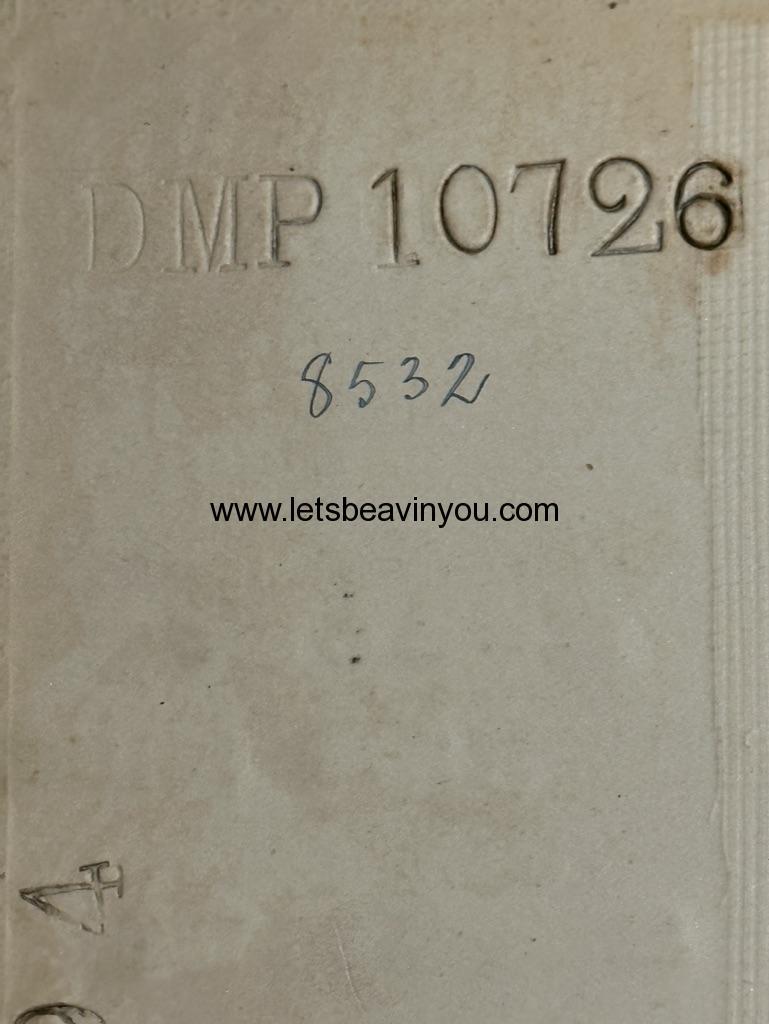The Royal Irish Constabulary was, as you no doubt know, the main police body in Ireland from 1836 – 1922. The RIC was notable as the first police force in the British Empire to be given the designation ‘Royal’ and developed a history and traditions some of which can be traced through both the Garda and the PSNI, as well as further afield, to this day.
My RIC collection is not the biggest or best that you can view, far from it. There are certainly other collectors in Ireland in particular who have more impressive collections than I, but the interest in policing is more than just the physical possession of objects (nice as that is), but in learning more about their work, organisation and so on and, most importantly, being able to share this with like-minded people. I would strongly recommend anyone interested in policing in Ireland generally, or in the RIC in particular to refer to my ‘Site Links and Reference Material’ page for further websites of interest and books and other sources worth consulting.
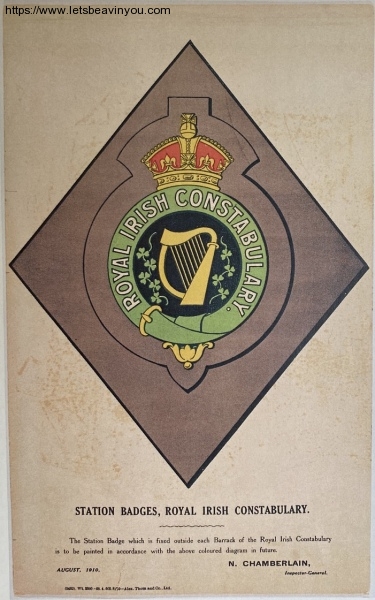
As with any area of collecting, where there is money there are fakes and so caution needs to be applied accordingly. It can also sometimes be difficult to identify peices correctly and I have, over the years, misidentified items from the Army (particularly the Victorian era Royal Irish Regiment badges) as being police. It seems that the general use of the Maid of Erin on a badge was not universal for Irish Regiments so caution should be applied accordingly. Neither can one place total trust on the description used by auction houses, although at least they put what they say in good faith.
I am sure that I am not immune to this either – if you spot something that is not right please let me know and I can (eventually) amend the site accordingly. That notwithstanding, I also have some artifacts whose origin I geniunely don’t know, and it would be great if anyone recognised them to let me know. As I’ve mentioned on other pages, my police collection was largely developed from the first two Barrack Badges that I got in Northern Ireland back in the last century. Then, such crests were trading around £1000 each and prices have softened since which is good news for the aspiring collector. Most artifacts, however, seem to be trending in the opposite direction, particularly medals which used to be relatively inexpensive and are now going for very substantial sums.
So, turning to my collection. This page has a mixture of items that don’t sit particularly easily into a sub-page. Items that do, for example, uniform, paperwork and so on, can be found by going to the relevant sub-page from the main menu above.
Helmet and Cap Badges
A Victorian helmet plate. Note the three ‘pearls’ either side and atop the cross over the Crown. Below that an Edwardian example (attached to one of my helemts).
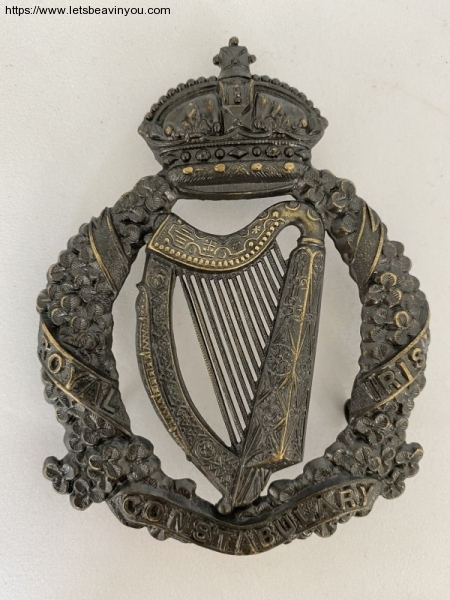
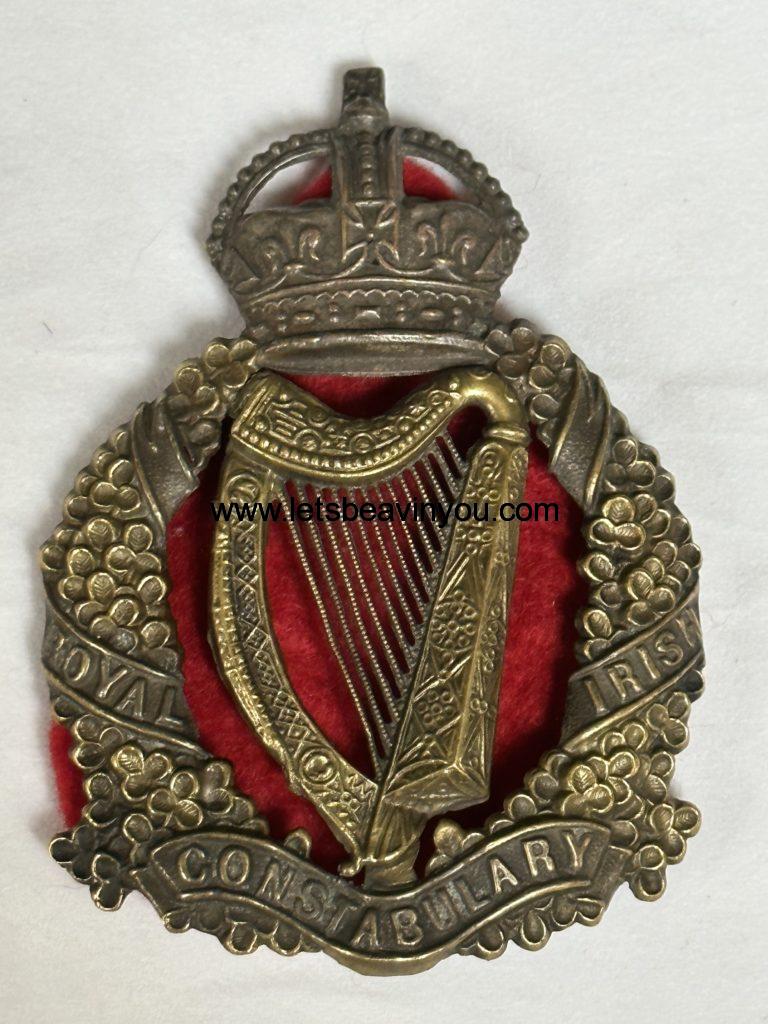
Gold coloured helmet plate, indicative of the RIC Band
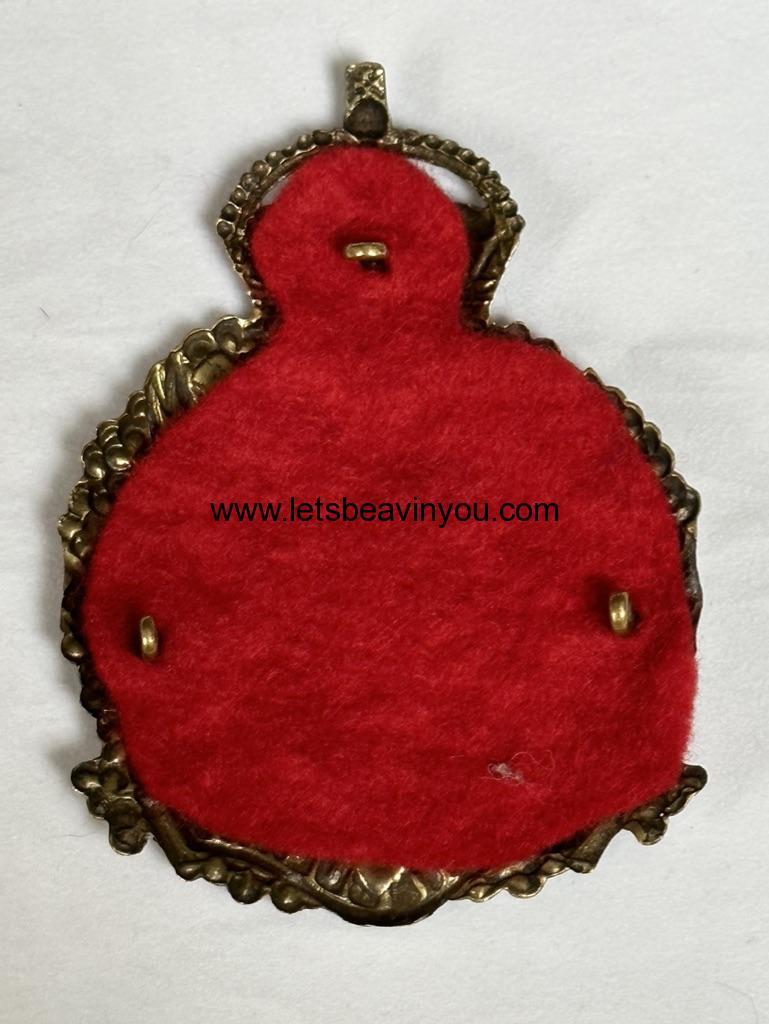
Bullion Officers Badges described by an auction house as RIC, possibly for pillbox hats: Victorian and Edwardian variants. They have also been identified to me as Royal Irish Regiment so this requires further research.
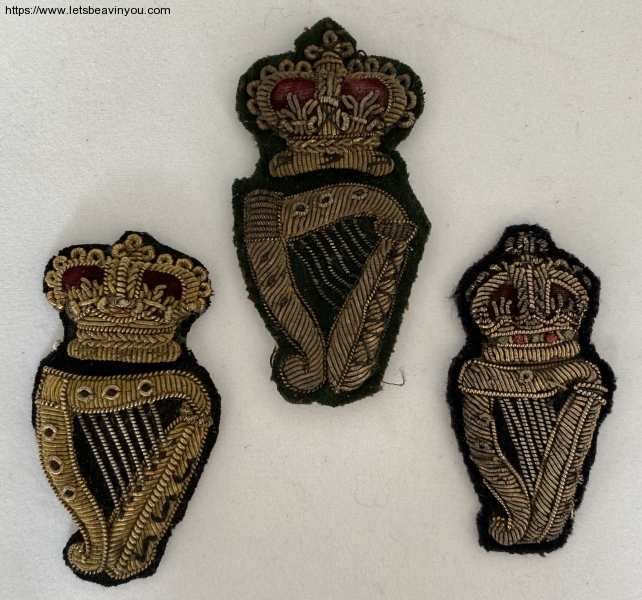
Cap and Collar Badges:
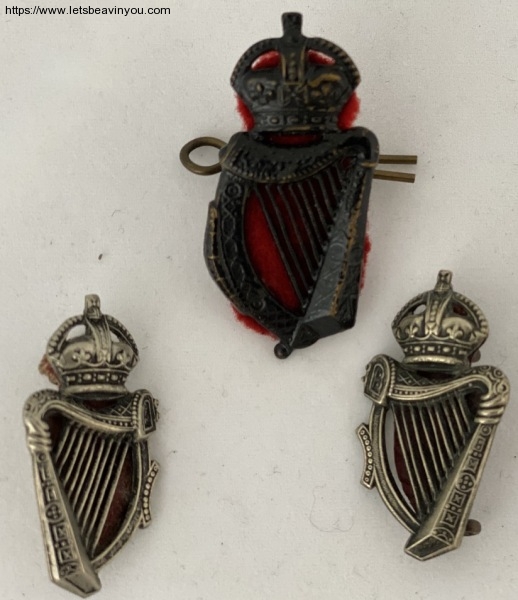
The majority of badges issued by the RIC were fastened by pins as noted above and there doesn’t seem to be absolute certainty that badges weren’t used that were of the split pin variety. Given that, I’ve included the following badge:
Buttons
I haven’t included every type or size of button at this stage, but to start, Victorian and Edwardian examples:
RIC Bedplate – issued to all recruits
Blank example followed by one issued to William Phair:
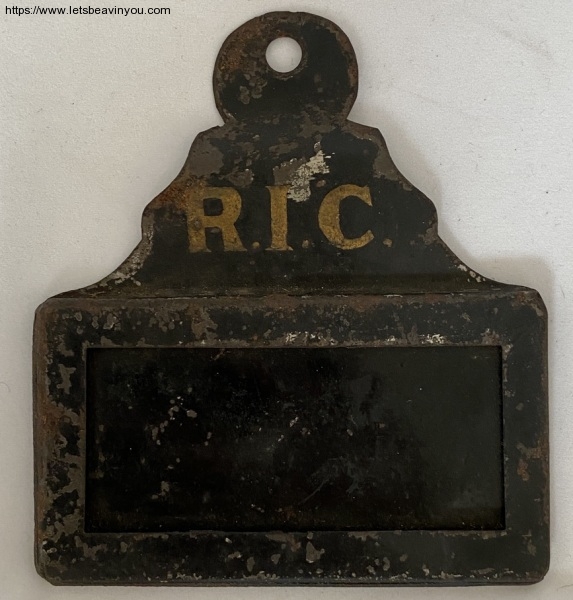
Constable Phair, a Protestant from County Cavan, joined the RIC on 9th May 1882 and served for thirty eight years, three weeks and eleven days before retiring on pension 20th August 1920. During his service, Constable Phair was stationed in Kerry, Tyrone, Monaghan and Down. His service is recorded in the Royal Irish Constabulary service records 1816-1922.
All recruits would also have been issued with a kitbox to hold their various items received from the Depot Stores, such as shaving kit, blankets, spare buttons and so on.
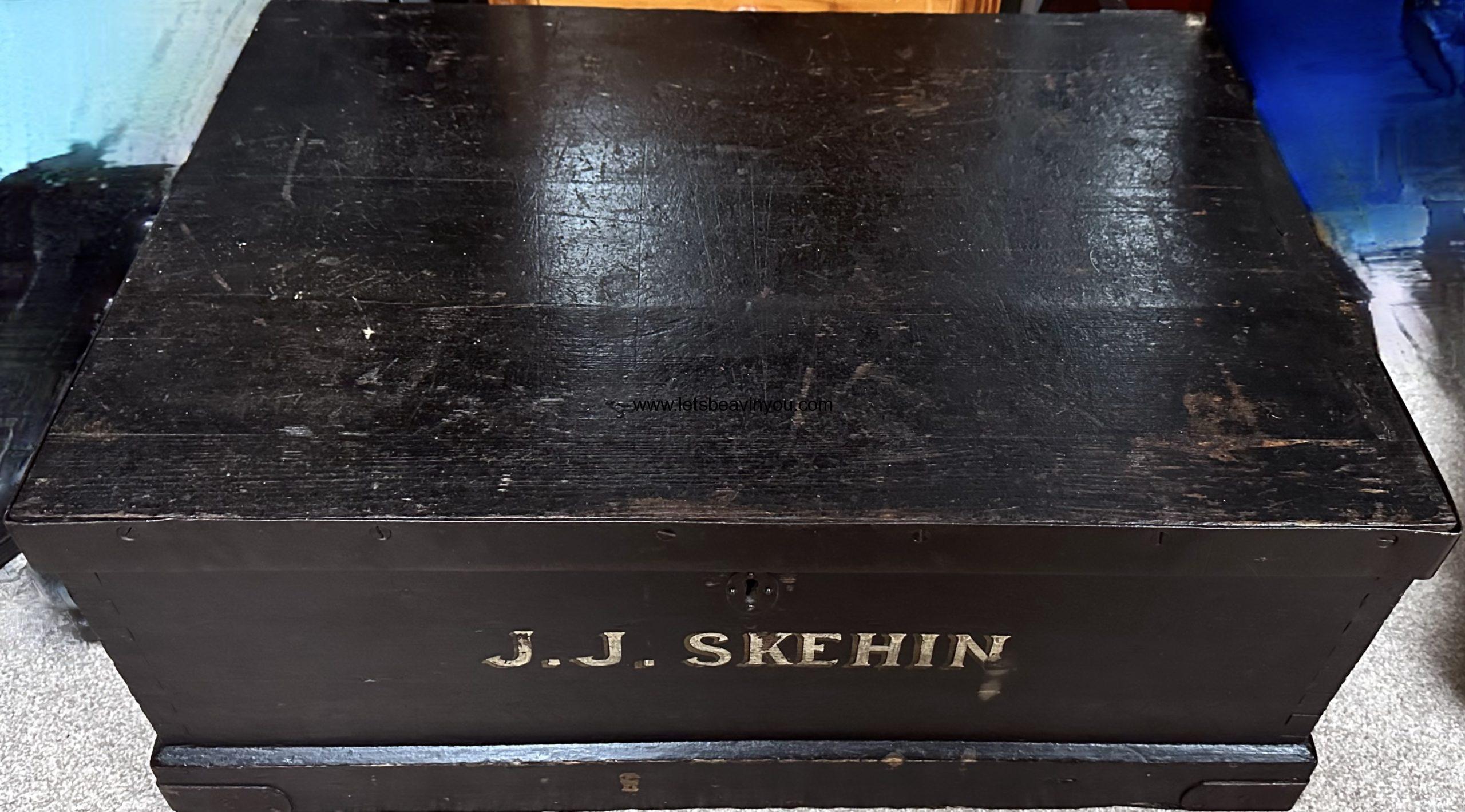
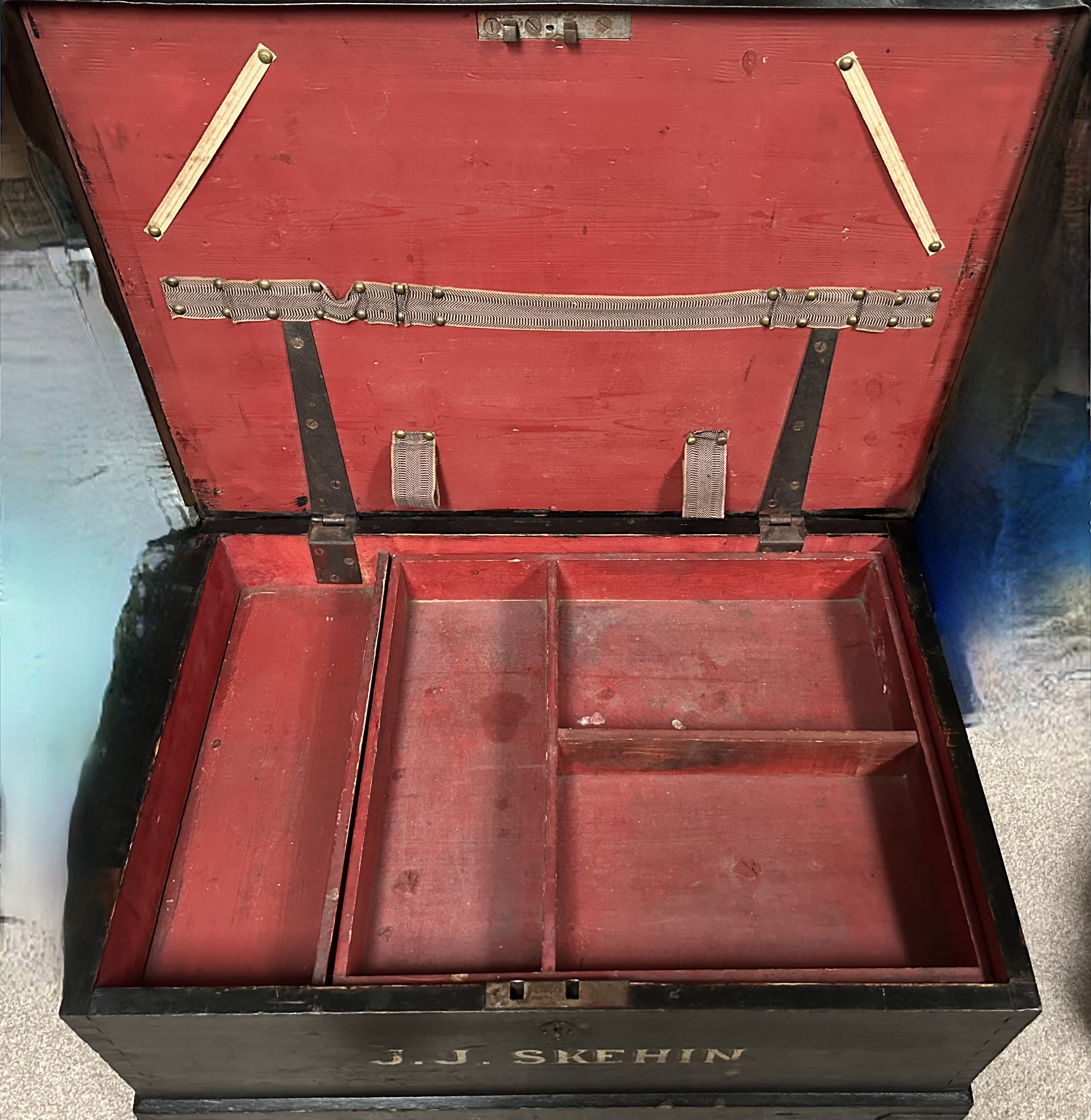
RIC Stamped Whistle
RIC marked whistles are not particularly rare and are a good entry level purchase for the new collector, albeit the older ones do command prices in excess of £100. The RIC ordered their whistles from J Hudson & Co and you can date yours by the manufacturers address stamped (usually) on the bottom of the whistle:
17 Mark St. Birmingham (J.Hudson workshop) 1870 – 1882
84 Buckingham St. Birmingham 1882 – 1884
131 Barr St. Birmingham 1885 – 1888
13 Barr St. Birmingham 1888 – 1909
244 Barr St. Birmingham 1909 Onward.
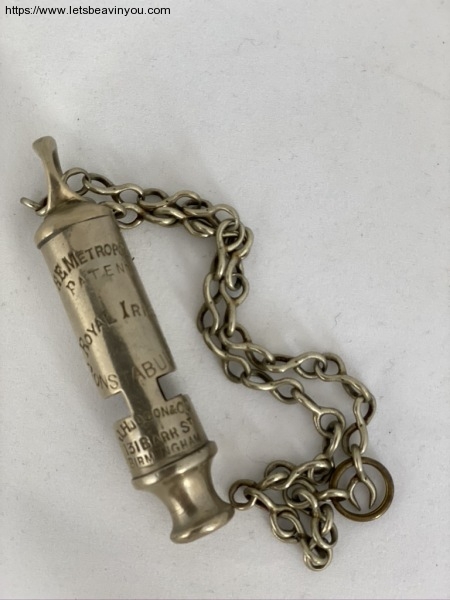
This example from 131 Barr St was produced between 1885 and 1888. As noted above RIC whisltes are still relatively common and the RUC marked whistle is actually rarer, because early RUC officers continued to use RIC whistles for many years and the RUC then stopped marking their whistles and moved to unnamed ‘Metropolitans’ (date to be discovered). In point of fact, the RUC continued to use RIC insignia (particularly cap and collar badges and buttons) well into the 1970s.
As an armed force the RIC routinely carried sidearms and on patrol longarms, but what is less appreciated by those not acqainted with their history is that for long periods of time the RIC rarely if ever carried armaments on duty, with the exception perhaps of the trusty truncheon on their belt. The following is a selection of equipment worn on the official snakebelt when on duty.
Open top Webley Holster and pistol ammunition pouch. A truncheon holder is in the bottom right foreground.
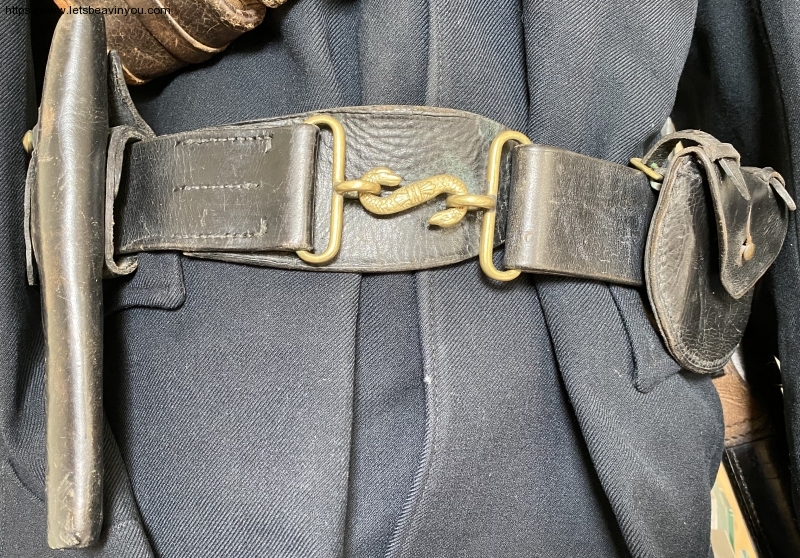

Handcuff Pouch and Irish Eights by Hiatt
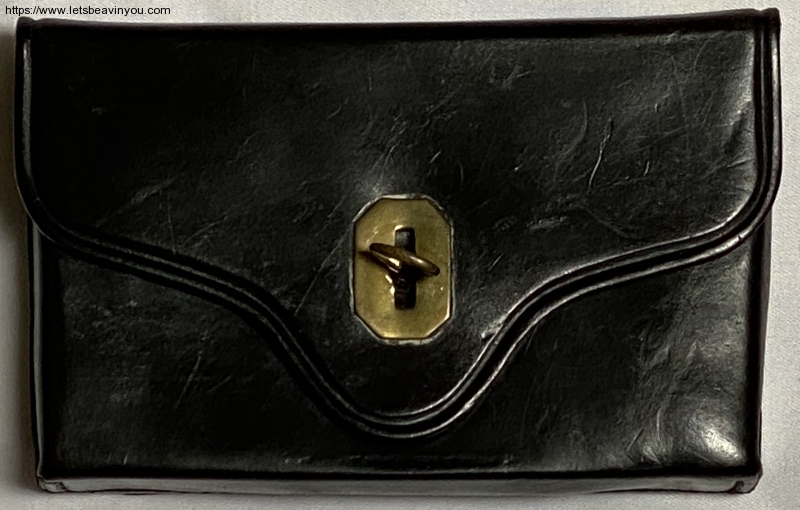
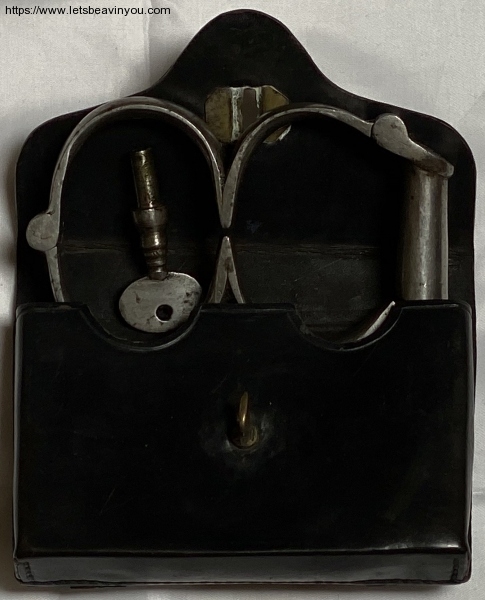
Rifle Ammunition Pouch

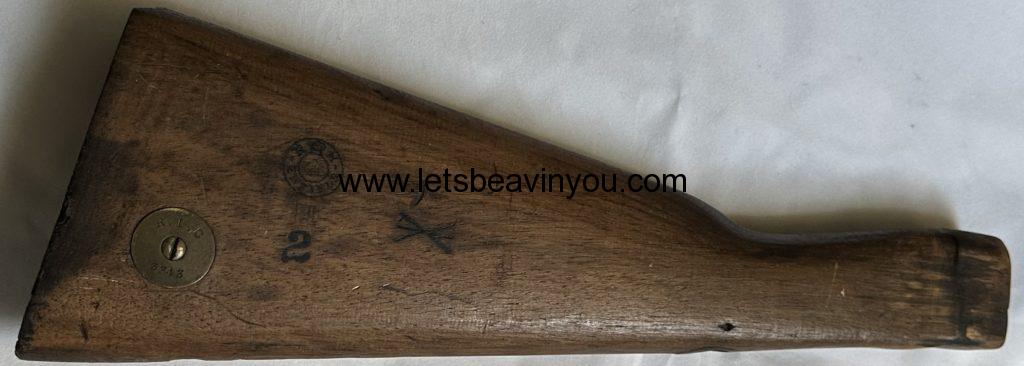
Martini Henry MkII wooden butt with close up of the RIC number tag insert.
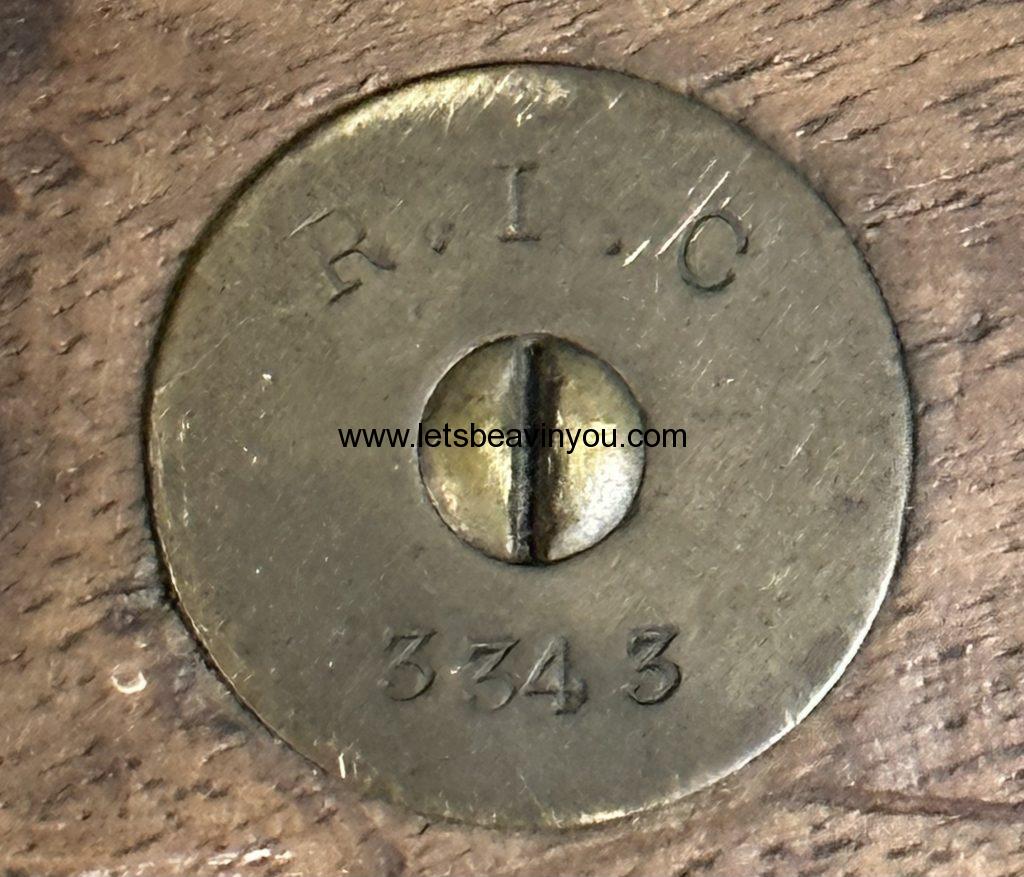
Shooting Trophy – the Perpetual Cup, 1911
Musket Bayonet
Lee-Metford Bayonet and Frog


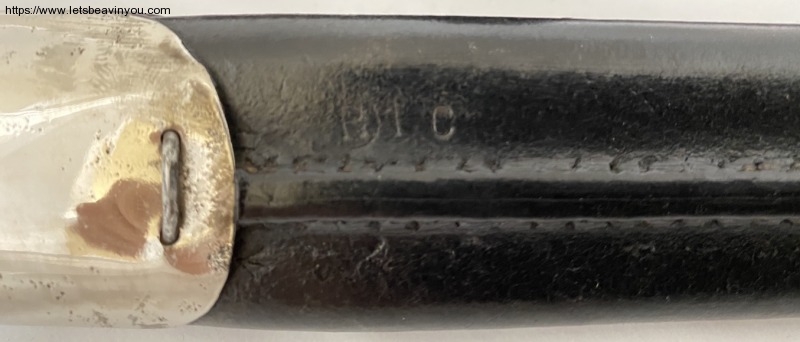
William IV Truncheon – no other marks (bought Belfast)

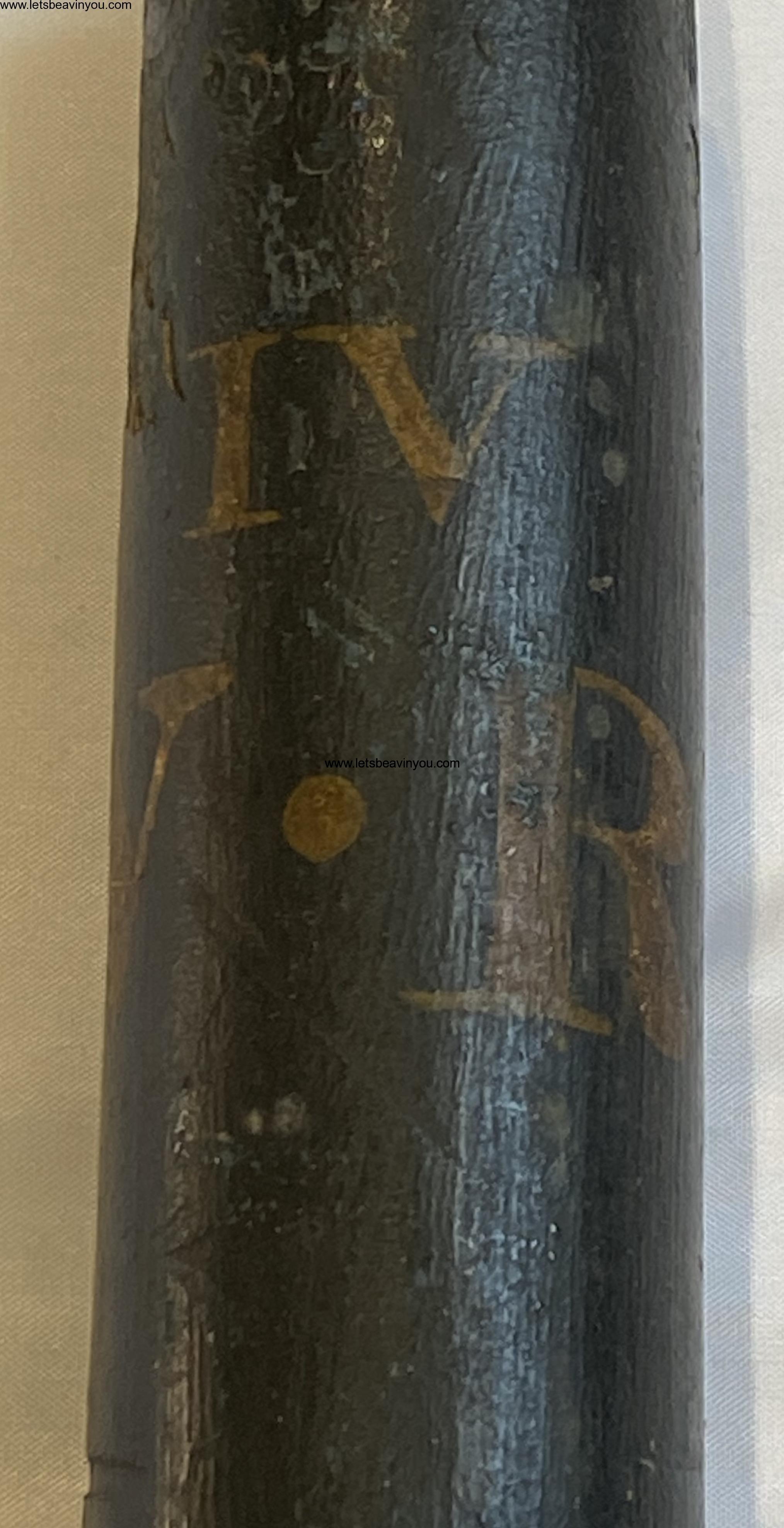 And a bog oak truncheon, usually made for tourists, but incribed to a Con Elliot, RIC
And a bog oak truncheon, usually made for tourists, but incribed to a Con Elliot, RIC
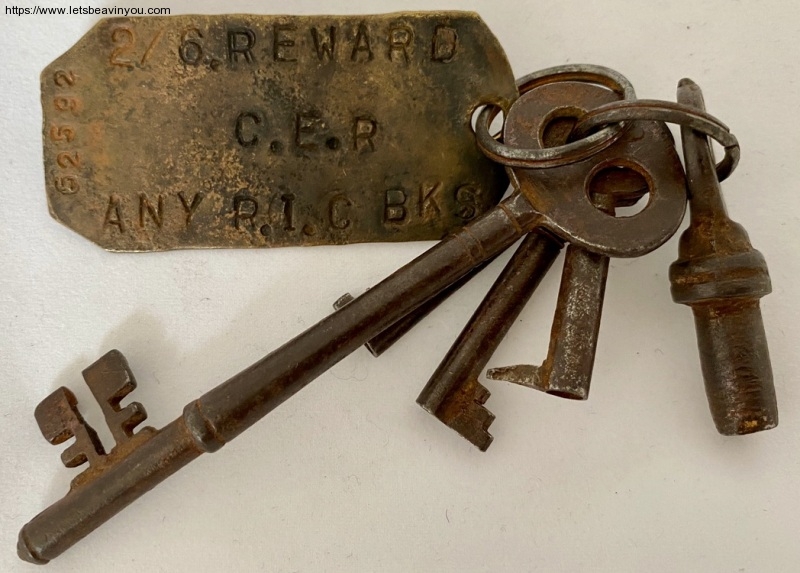
Swagger Stick
A miliary invention, the swagger stick or ‘regulation cane’ was carried by officers, generally when off duty in uniform. These were purchased privately and hence come in a variety of types.

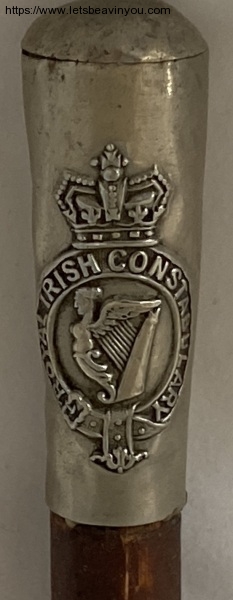
The following Ledger was described at auction as an ‘Edwardian RIC District Inspector 1st Class Private Ledger with Brass Bramah lock and key’. There are, however, no marks or labels to confirm this and other than the makers / retailers label confirming it as being from Belfast, the RIC connection seems tenuous at best. I’d be grateful to hear from anyone who might add any light to the subject. At the very least it is still a lovely period and untouched ledger.
Recruiting Poster – Printed in Belfast
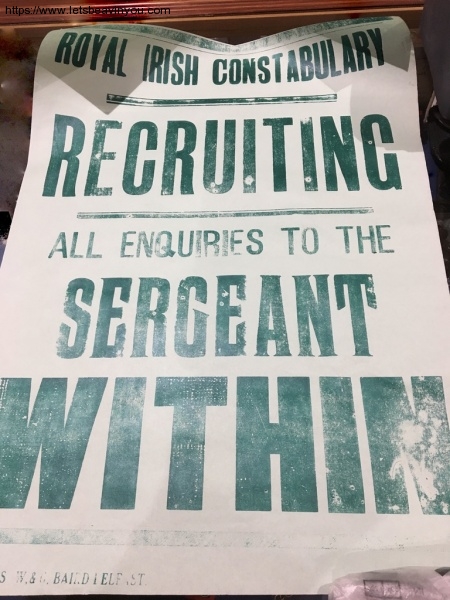
Officers Notebook
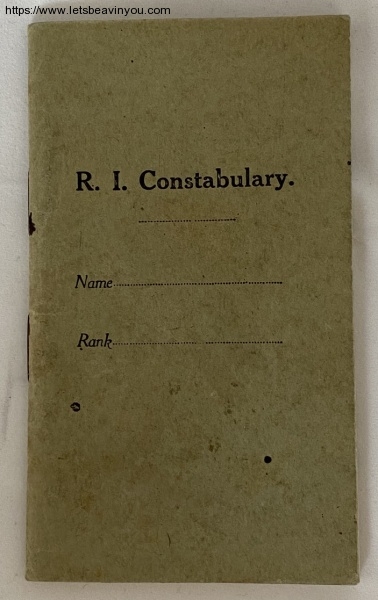
Constable’s Notebook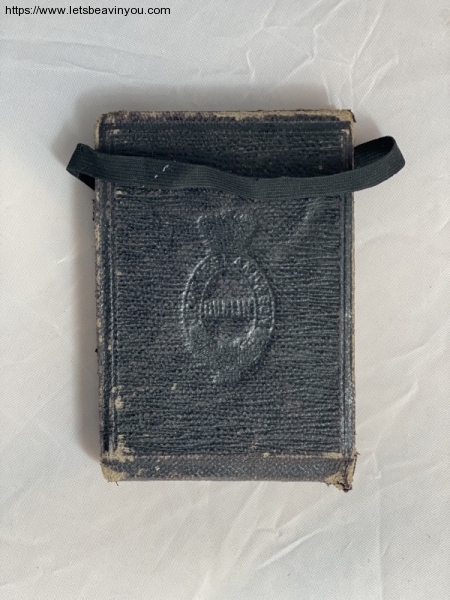
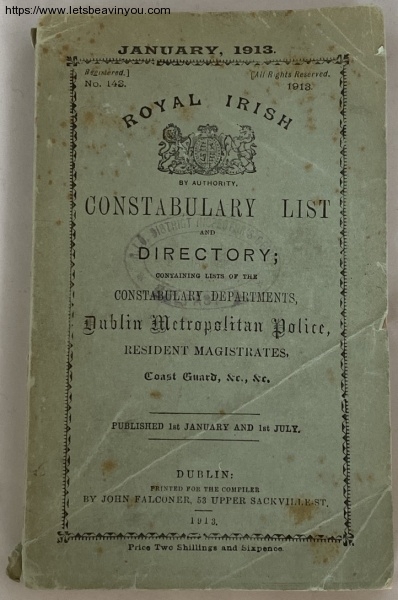
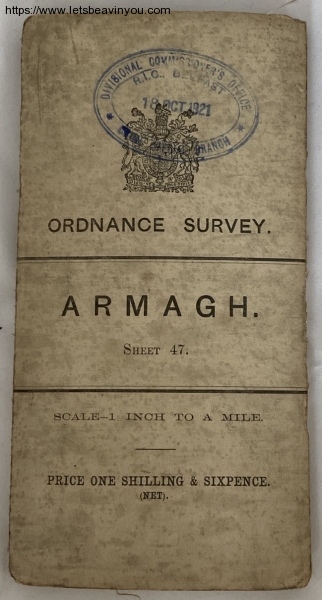
Then, as now, Armagh was of interest to Special Branch: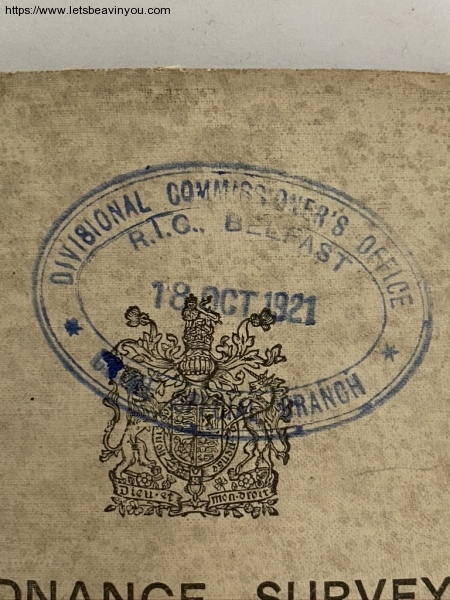
This looks to be a Revenue Stamp of some kind:
and when held up to the light…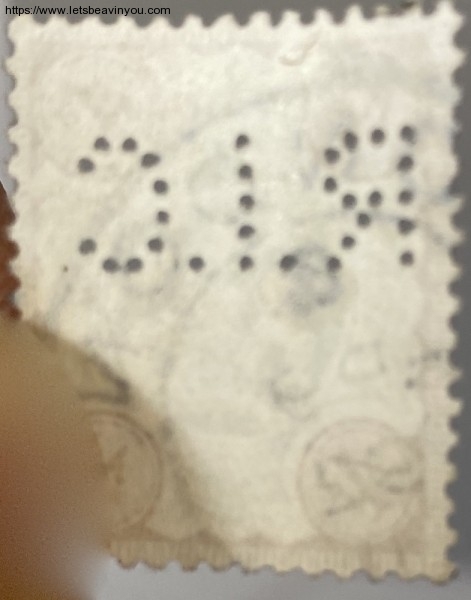
Christmas Cards
I have two RIC cards in my collection, the first dated 1917 is of particular interest to me because on the inside it has a reproduction of a watercolour by C. Clark entitled ‘Royal Irish Constabulary on parade in the Phoenix Park’ that I also have in my collection. The second, dated 1919 has the inscription ‘well done’ below a picture of two constabulary officers, one from the early nineteenth century while the second has just been demobbed from the First World War.
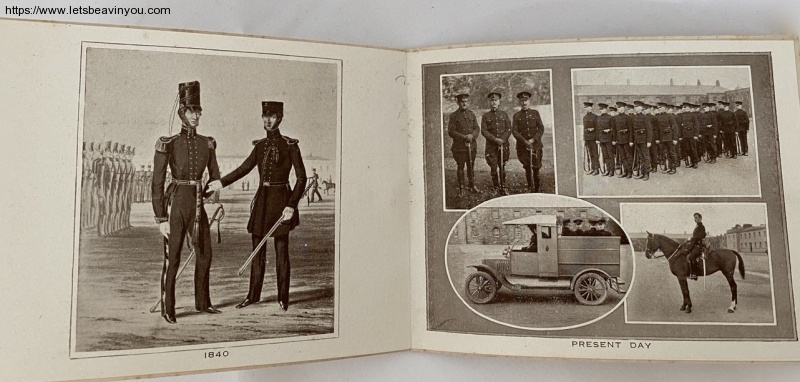
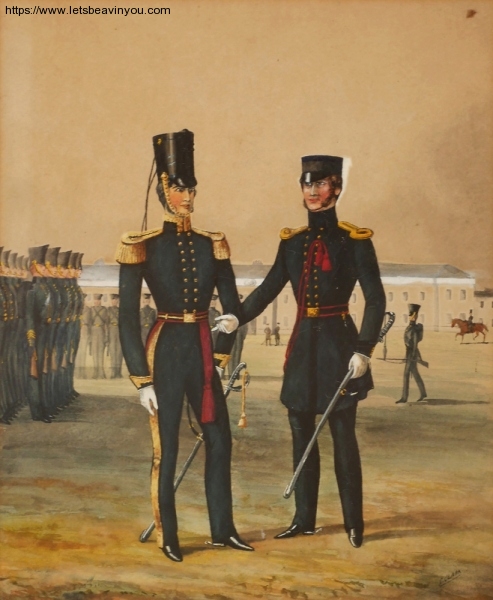
The officer on the left in the foreground has been identified as George Warburton who retired from the RIC in 1838 with the rank of Inspector General of Police in Ireland.
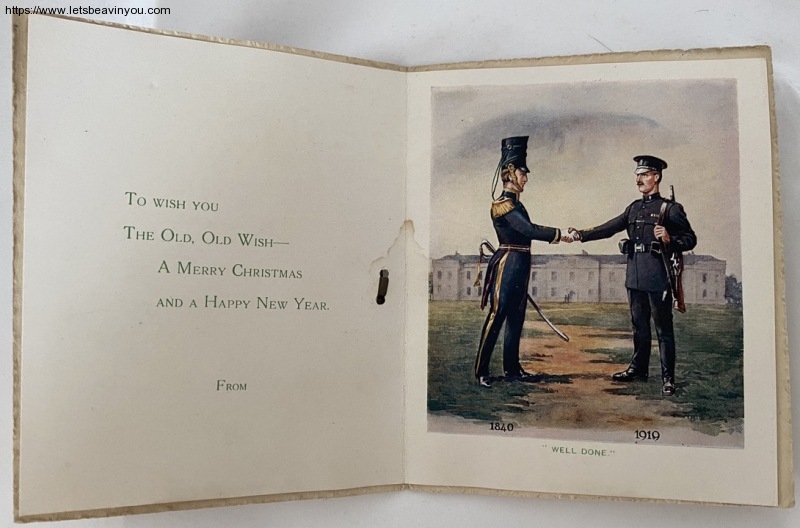
A further example from the Auxiliary Division:
Illuminated Address to Head Constable Beirne
Silver Trophy Cup
A Late Victorian Silver Trophy Cup and Cover, by Daniel & John Wellby, London 1896, the cover by John & William F Deakin, Sheffield 1897, the high cover with horse finial, the partially reeded body with leaf-capped reeded handles, engraved with crest of Talbot dog crest and motto ‘Fortis Cadit Sed Non Cedit’, presentation inscription to Samuel Richard Carter, 1st District Inspector, Royal Irish Constabulary, Ballymena, 1897, on an ebonised plinth. 38.5cm high exc. plinth, 46cm high overall.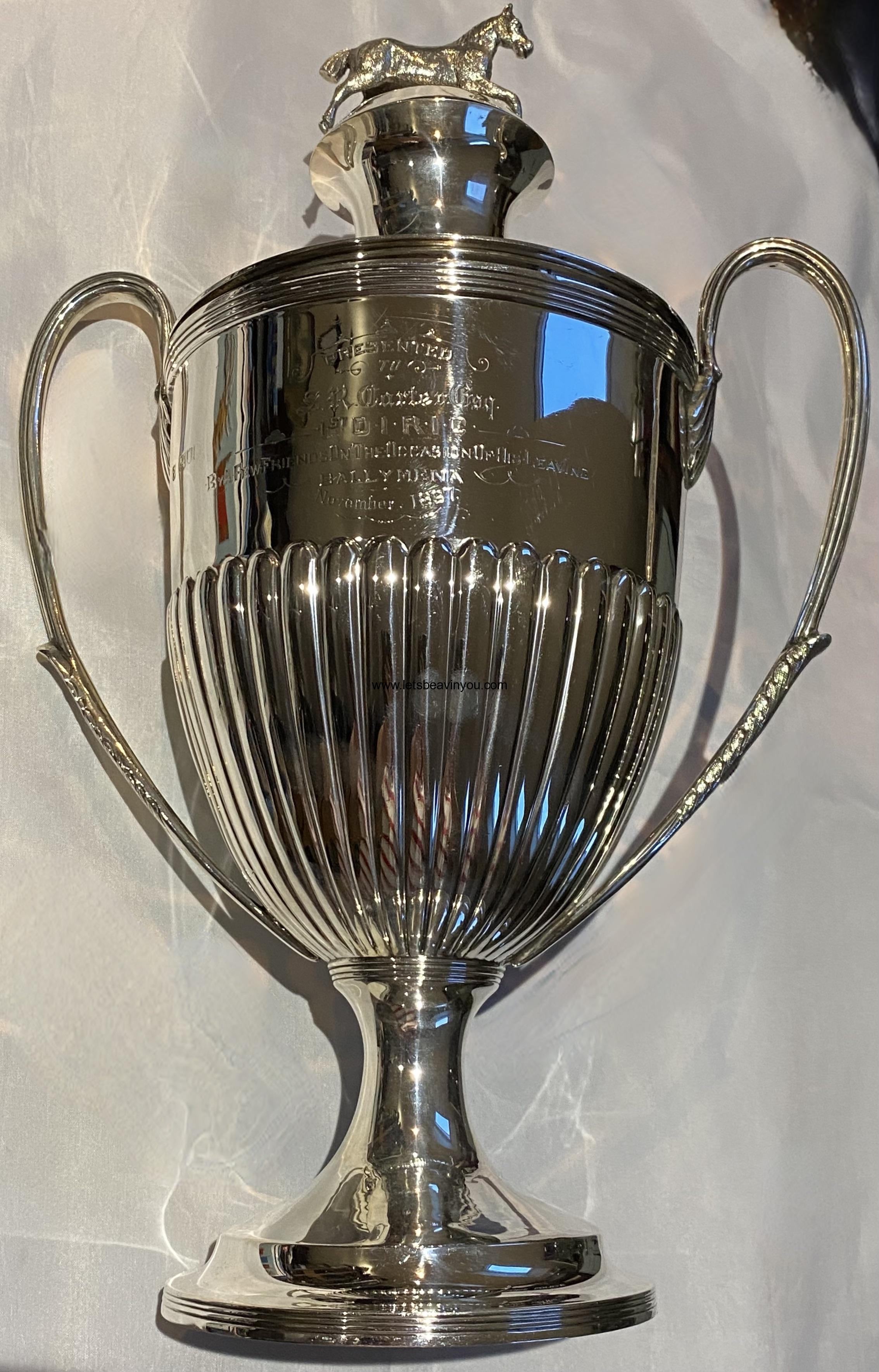
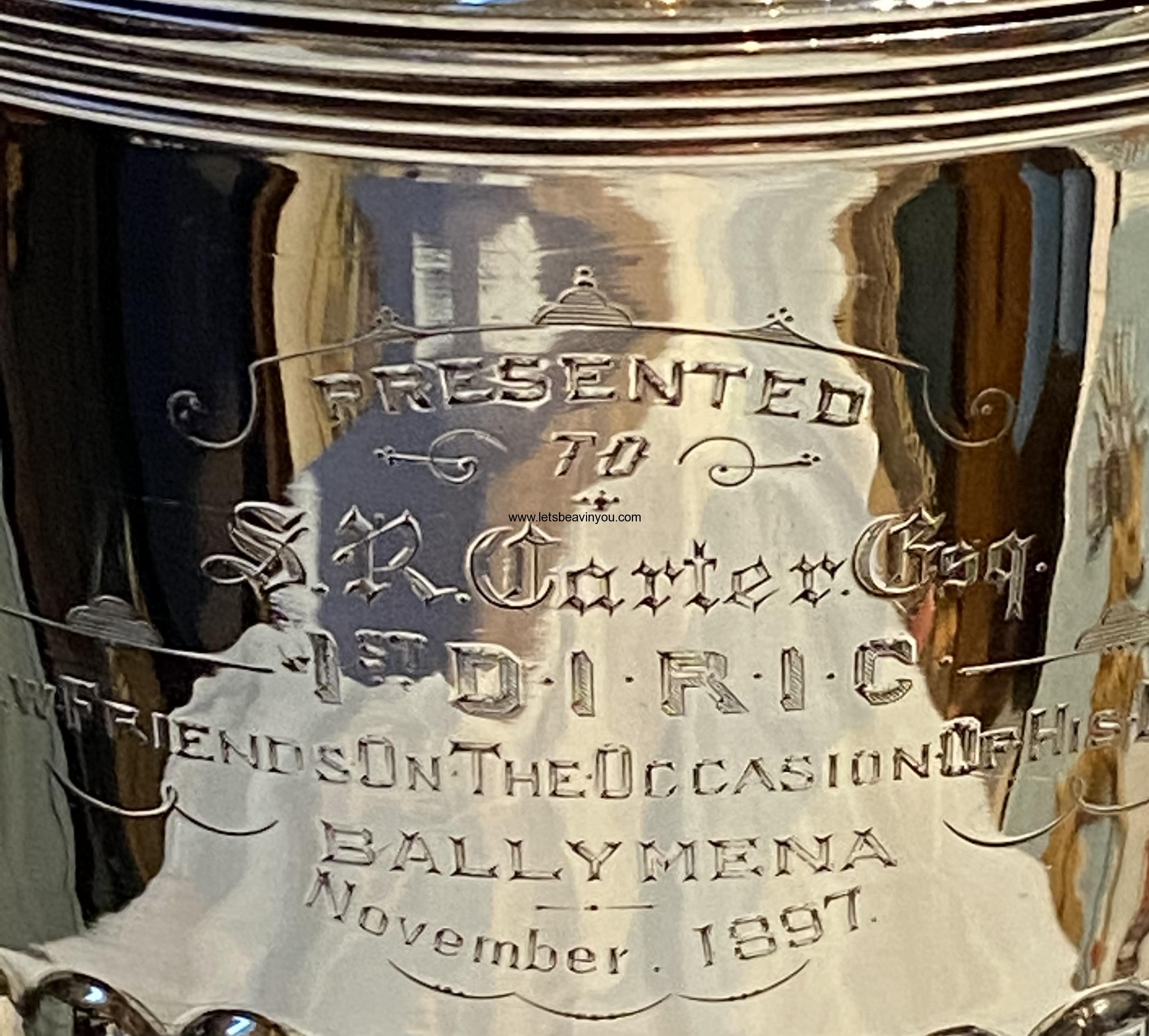
RIC Medals and Sports
The RIC, like modern police services, had a strong ethos of sport and physical fitness, with a number of clubs authorised by the force as well as annual sports days and competitions. The following is a selection of material from RIC sports, together with a number of medals awarded to officers during Royal visits.
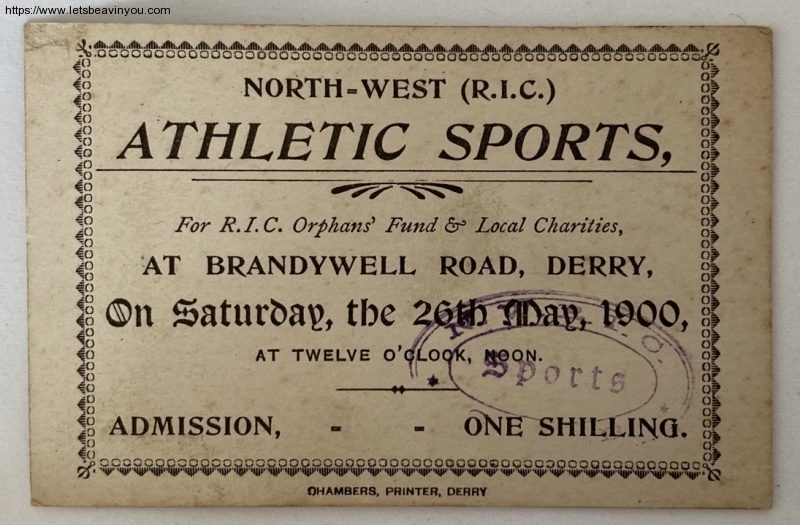
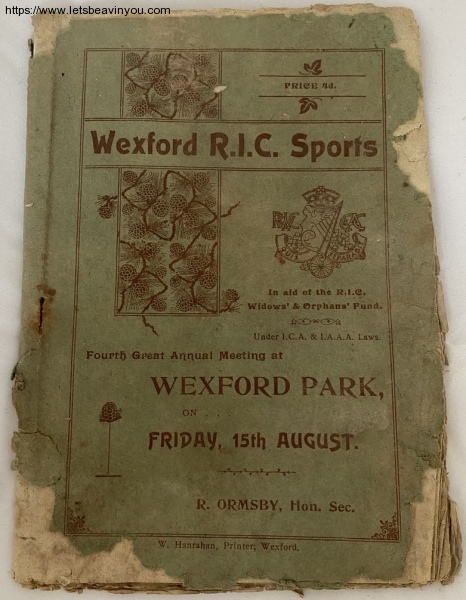
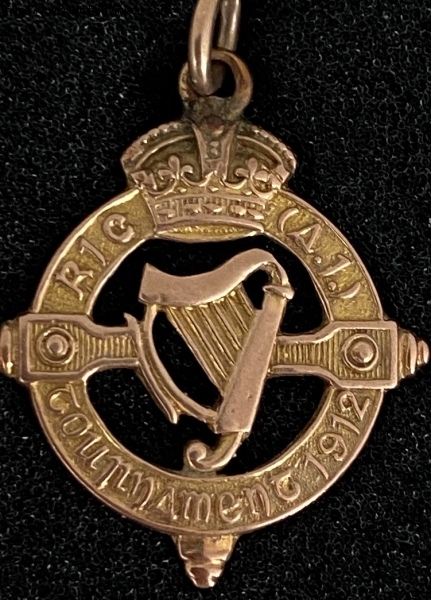
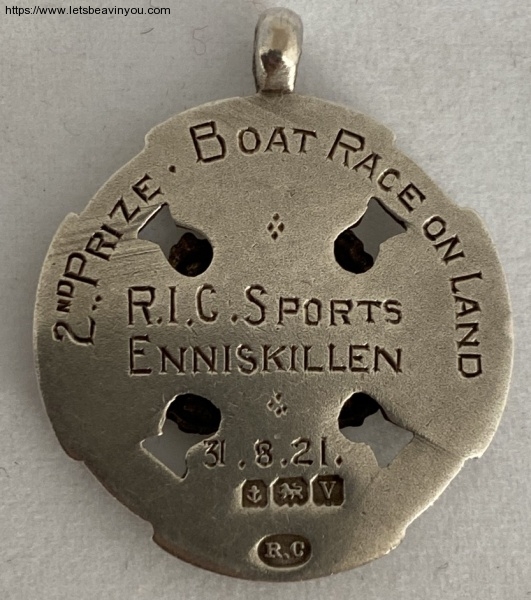
A fob, presentated to Constable JS Taylor, ‘B’ Special Constabulary, RIC.
Miscellaneous and Other Items
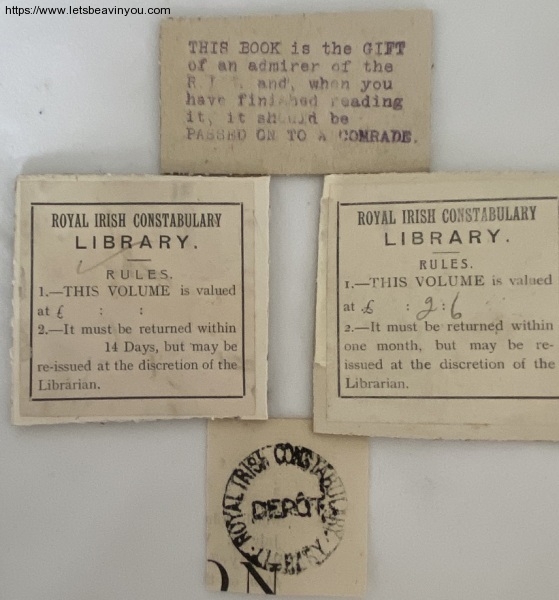
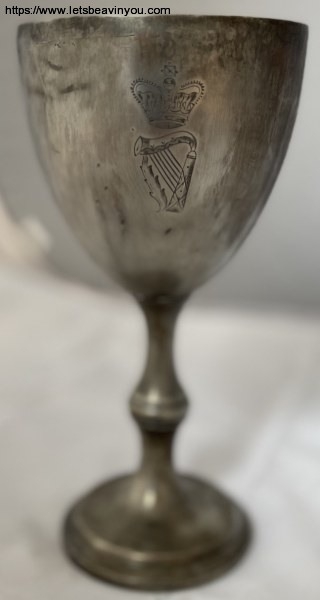
Victorian Chalice – could be Militia?
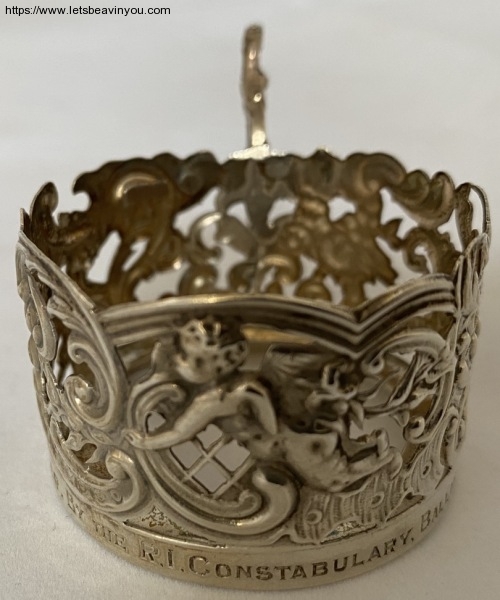
Gift from the Constabulary of Ballina to Miss Shier, 30th June 1914, possibly on the occasion of her engagement, or more likely as part of the recognition of her father, DI Hugh Shier who had retired from Ballina the previous day.
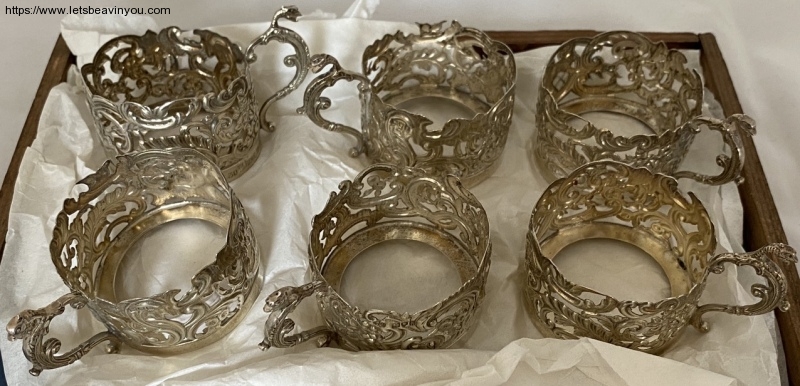
Below, a hallmarked silver mess fork and fish knives, with Victorian Crown:
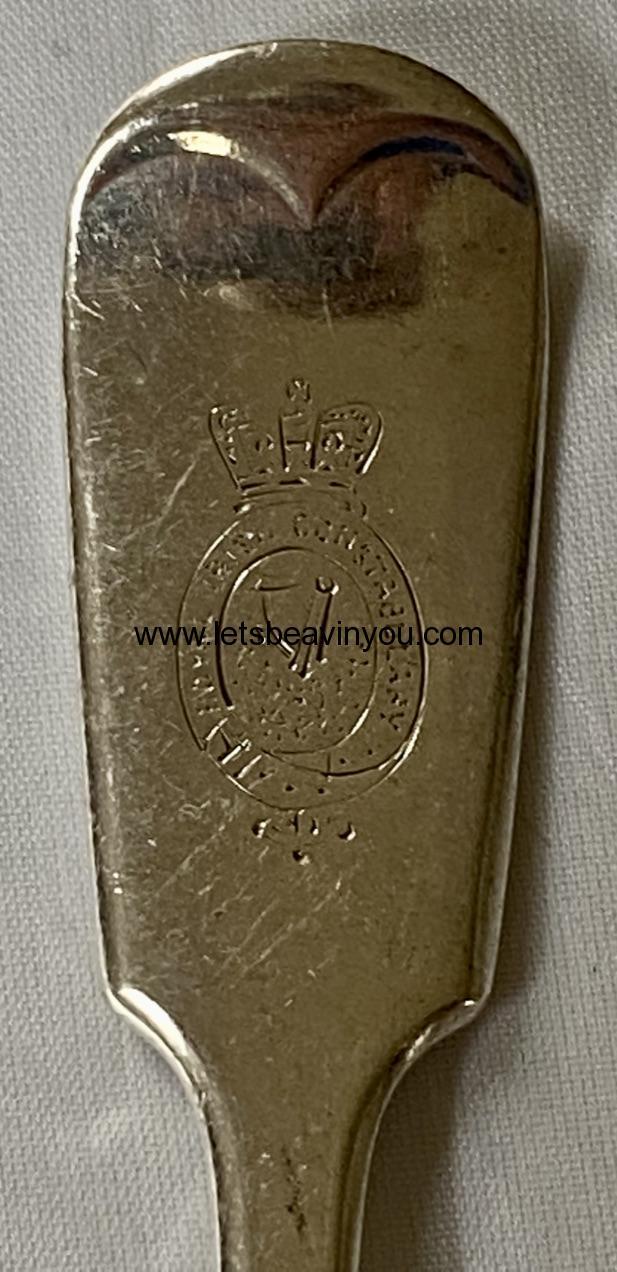
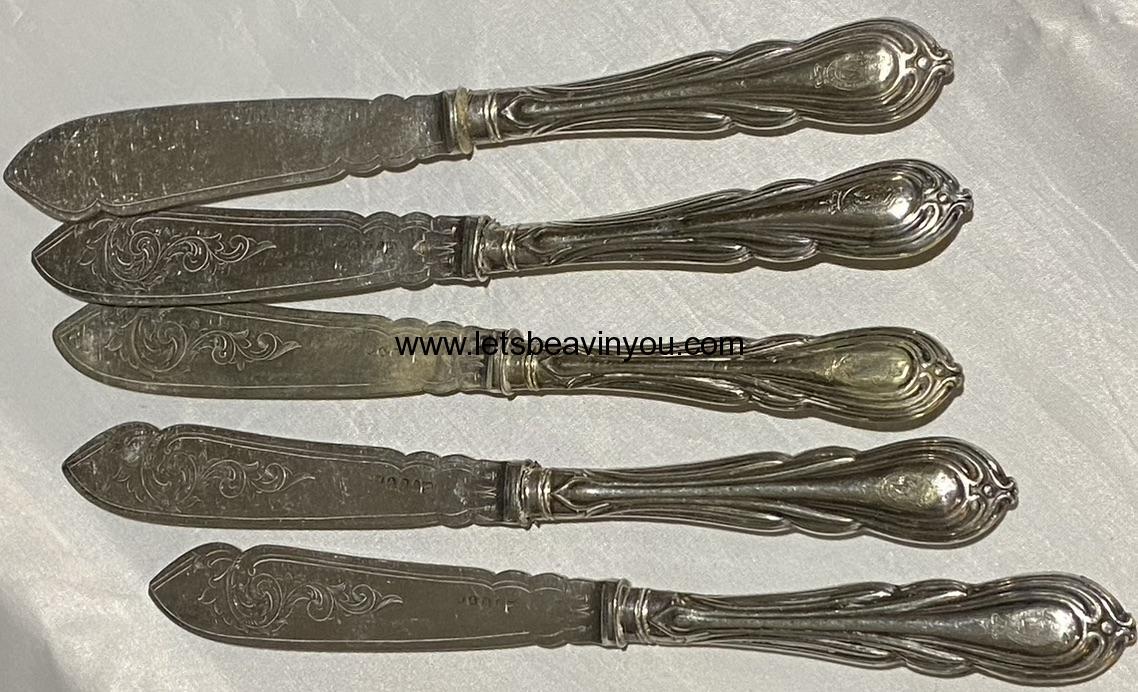
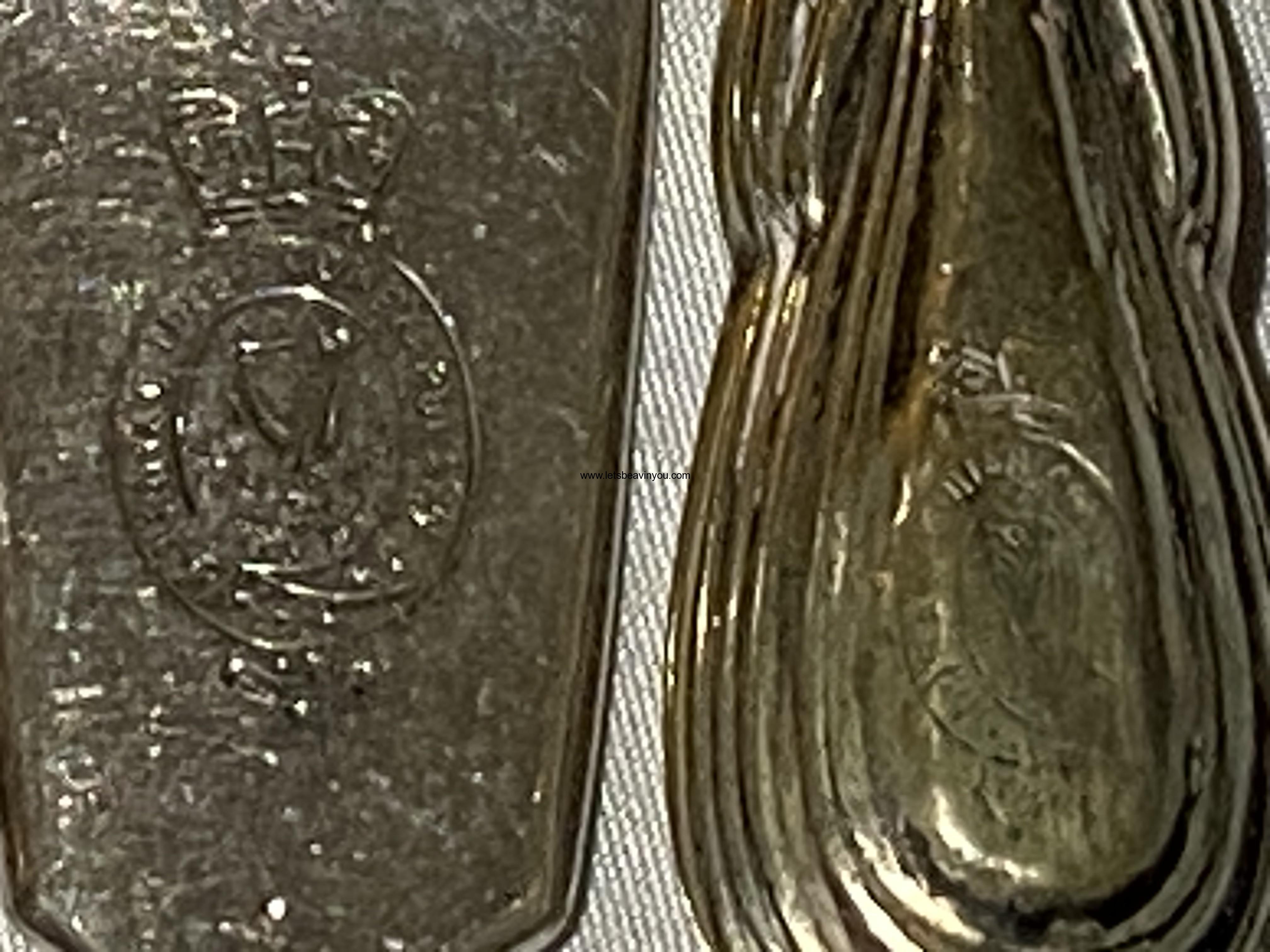

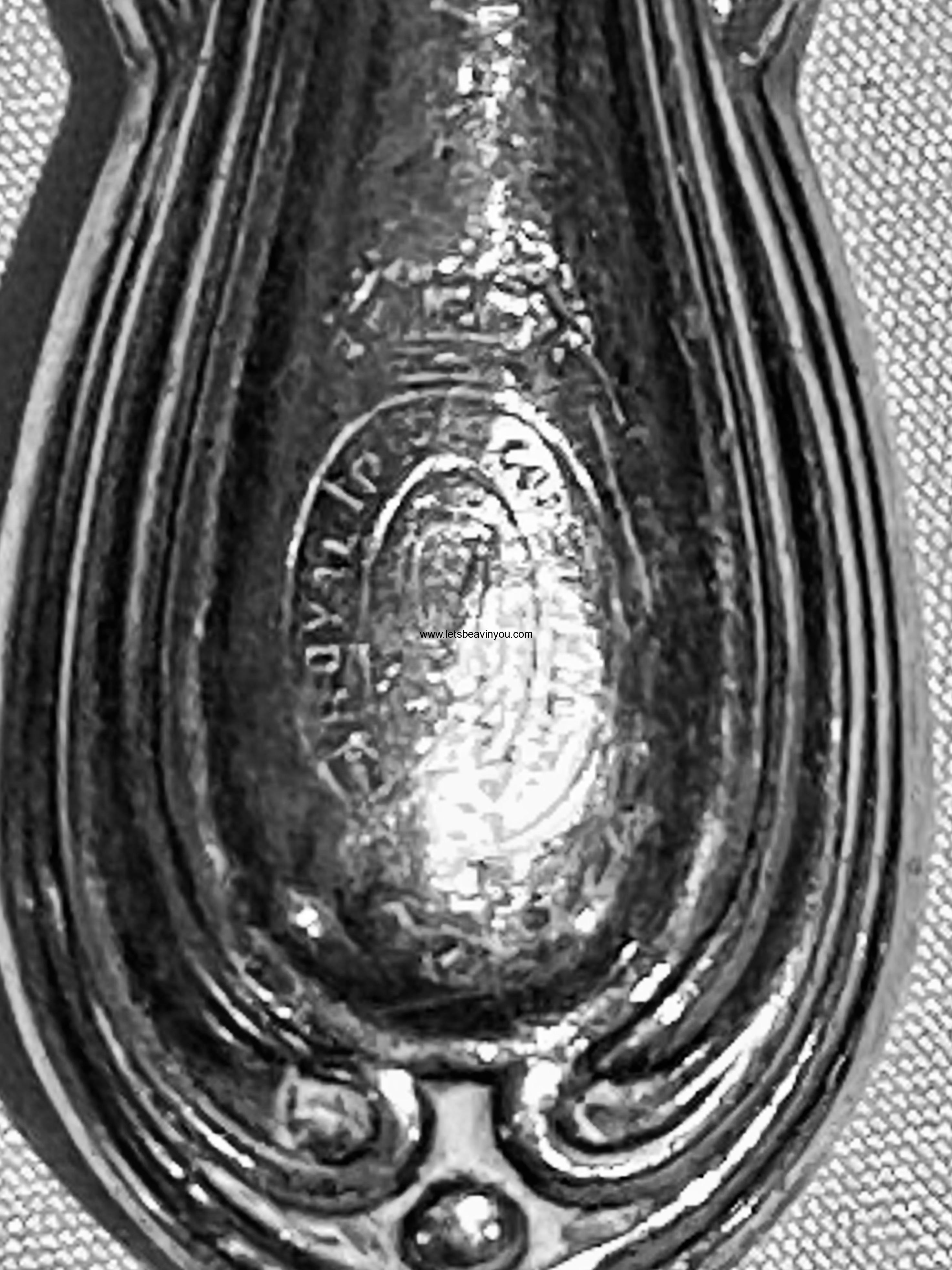
Each Constable would also be expected to be familiar with the various force Manuals, Codes and Regulations, of which the following are a sample:
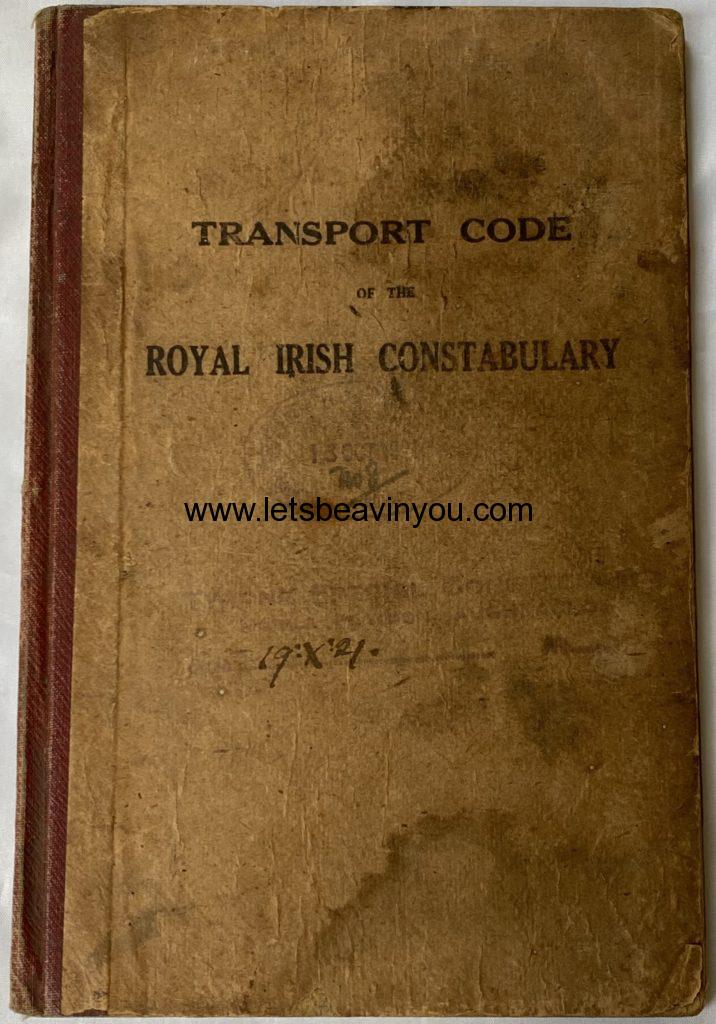
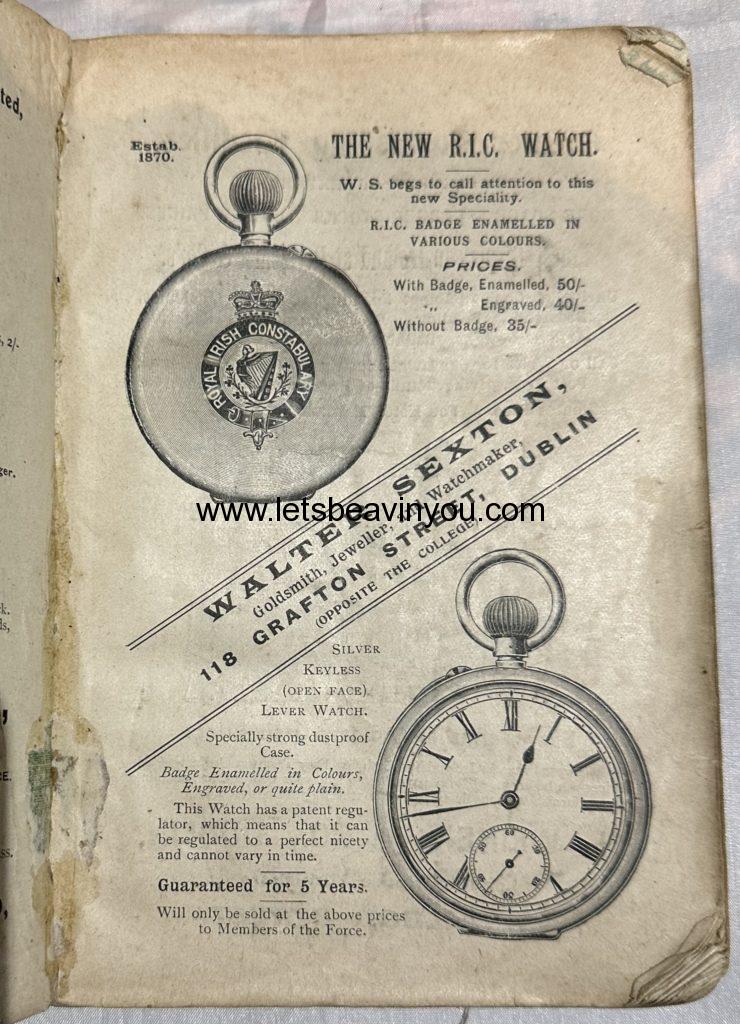
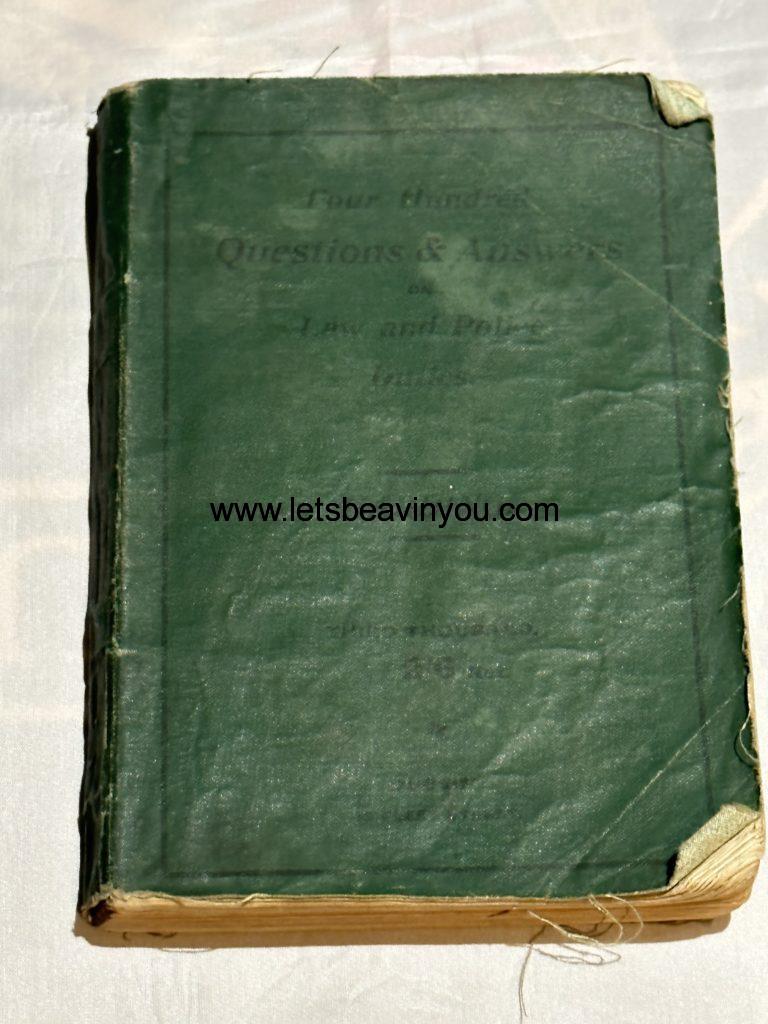
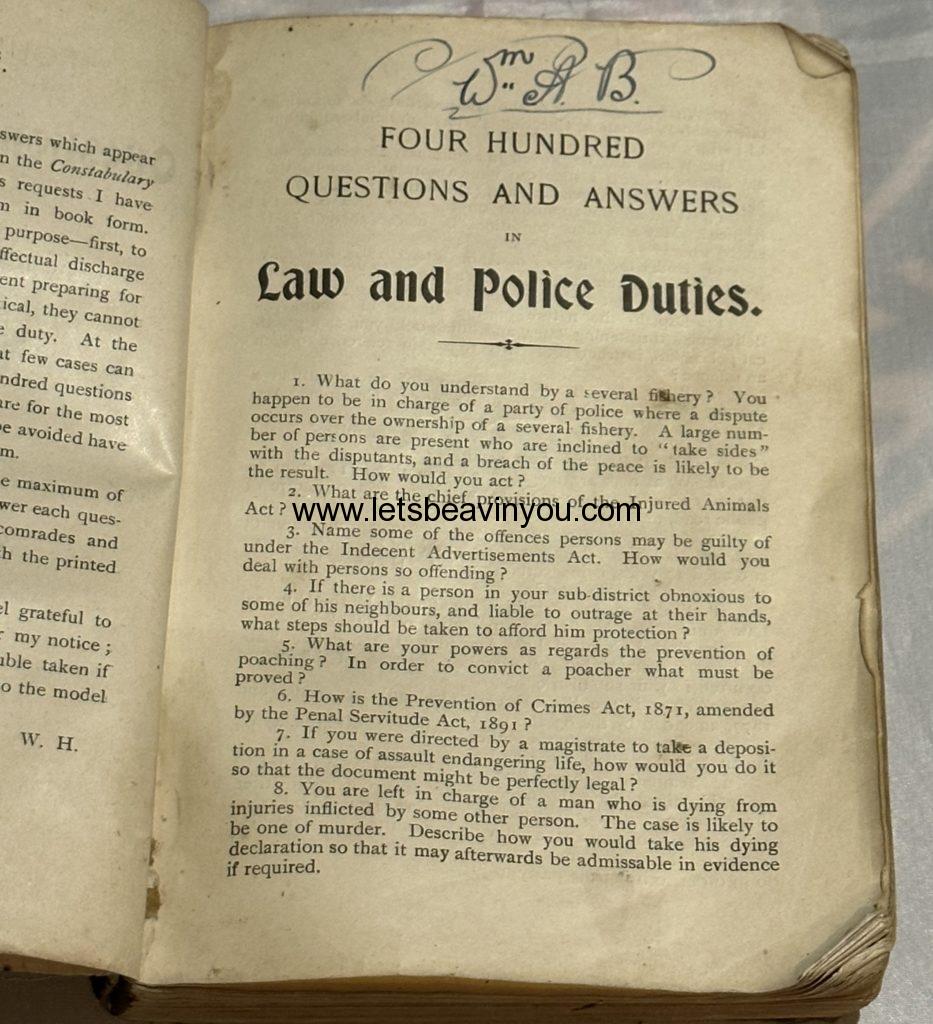

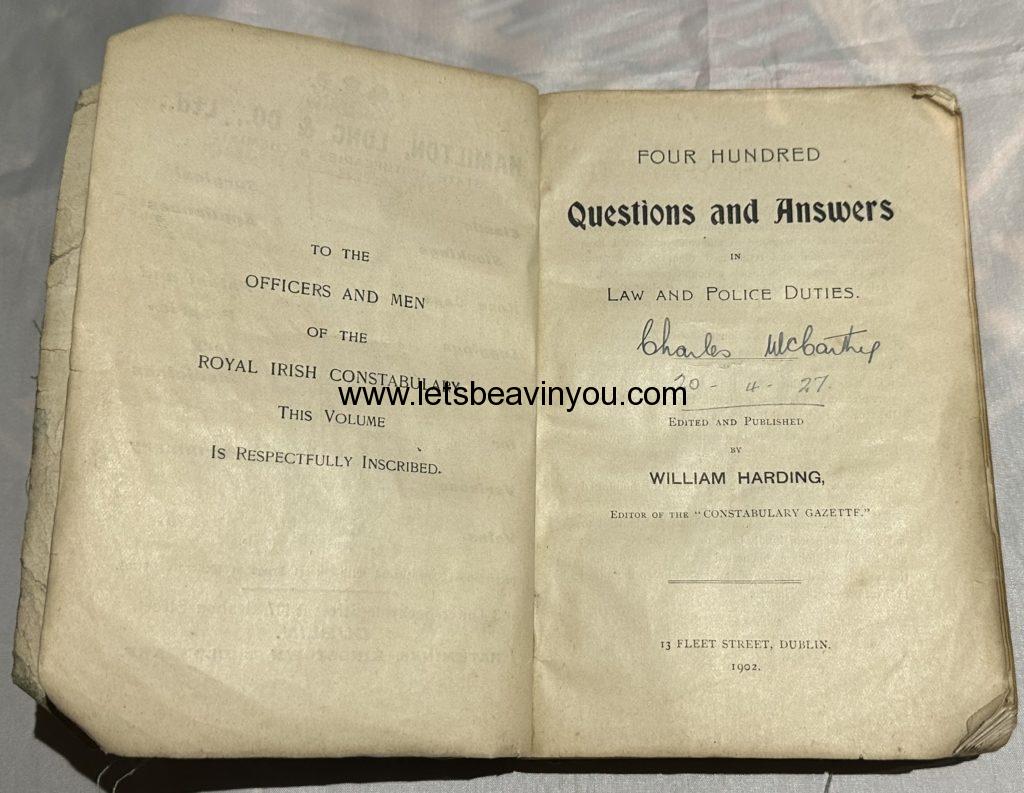
Finally, a sample of DMP items:
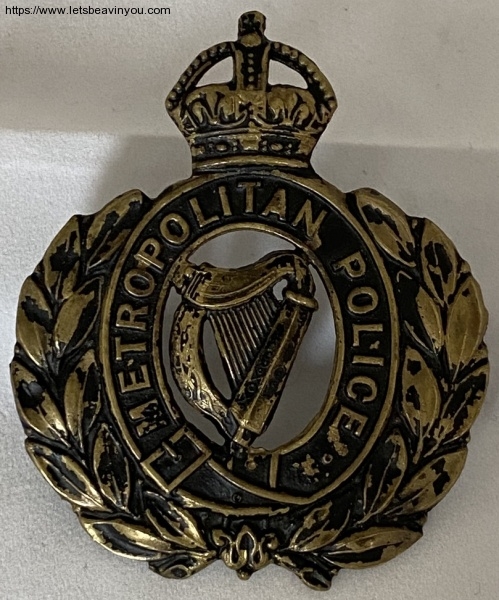
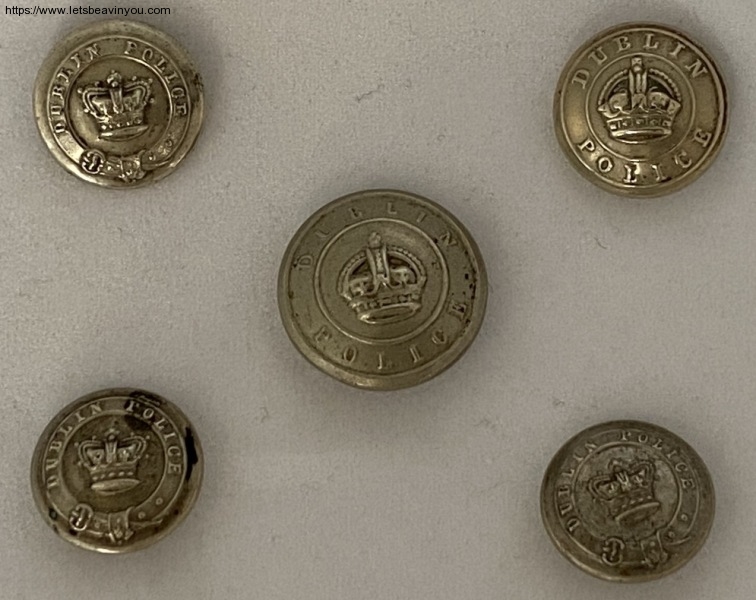
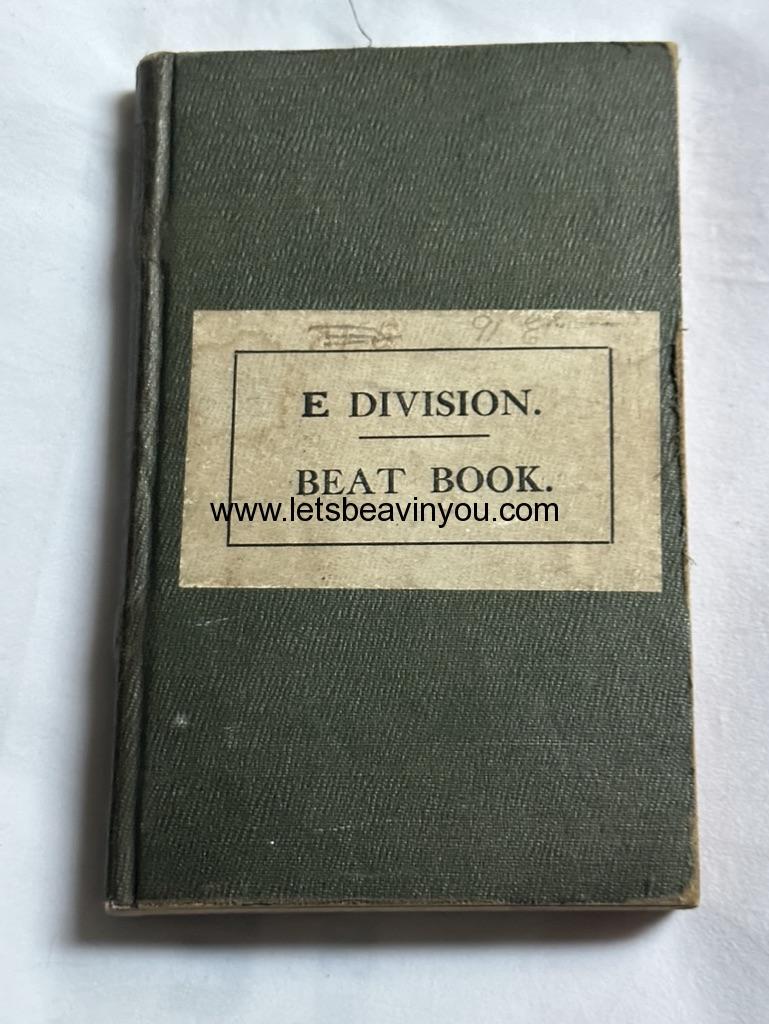
I hope that you have found this page interesting. I’d be glad to hear any comment or insights you might have.

